
5 Best Watermakers for Sailboats

Last Updated by
Daniel Wade
June 15, 2022
With the right Watermaker, the ocean becomes an almost immeasurable supply of fresh and clean drinking water to keep you hydrated during your offshore sailing adventures.
Many sailors do spend a lot of their time and money on various parts of the sailboat including the sails, engine, electronics, and generators especially when preparing for long-distance voyages.
While there's absolutely nothing wrong with this, they often overlook one crucial part of general human survival: having an ample supply of fresh drinking water.
Whether you have freshwater drinking tanks on your sailboat or planning to cruise in areas where you can easily access clean drinking water, the hassle involved in having to come to the dock to fill the water tanks can be quite overwhelming.
This is exactly why you need to find the best watermakers for sailboats.
Like many other nautical technologies, watermakers have significantly advanced in the last few decades to become very efficient and more reliable. They're no longer a luxury on your sailboat but a necessity. Better still, watermakers have become relatively affordable and are meant to keep you hydrated as you explore areas that do not have clean and fresh drinking water.
In this article, we'll take a look at how watermaker systems work, highlight its benefits, and highlight the best sailboat watermakers on the market right now. At the end of this read, you should be able to choose the best watermaker for your sailboat.
Table of contents

Benefits of Having a Watermaker on Your Sailboat
The freedom and security that come with having full water tanks on your sailboat are of immense importance, especially if you're cruising in an area where fresh drinking water is hard to come by and quite expensive when you do. As such, having a watermaker aboard your sailboat is no longer a luxury like it used to be in the past. With a steady supply of fresh and clean water, your life on the sailboat will be a lot better. This is because you'll have enough clean water to drink, cook, wash, and shower, which is beneficial if you want to enjoy your sailing adventures.
Honestly speaking, many sailors do not actually need a watermaker. Well, if you're planning to sail just near the shores, then there's a chance that you can easily access fresh and clean water by the dock. But this can be limiting if you've been dreaming of going off the grid and sailing to some exotic and unknown places in the world.
With that in mind, a watermaker makes a lot of sense to most sailors. You won't have to worry about having to carry aboard gallons of fresh water for cooking and drinking during your voyage. You won't have to treat freshwater as a precious commodity that must last until you can refill at the next port. With a watermaker, you can simply go ocean crossing without worrying about running out of water.
A watermaker allows you to have a steady supply of fresh and clean water to keep everybody well-hydrated and healthy. You can clean the water anytime you feel like and all you have to do is replace the filter once in a while and you'll be good to go. In essence, a watermaker is probably one of the most important equipment to have aboard your sailboat, so installing it is of great importance if you're a serious sailor.
The Basics of Modern Marine Watermakers
Modern marine watermakers essentially follow the principle of reverse-osmosis to produce pure, drinking water from seawater. During this process and through very high pressure, seawater is forced through a semipermeable membrane that only allows freshwater molecules to pass through it but not salt, bacteria, or any other organic material. The newly made pure, drinking water is then piped to the sailboat's water tanks while the leftover (brine) is discharged overboard.
Even though marine watermakers may differ in the type of pump that's employed and how it is driven, this is one of the most important features in every watermaker. In most cases, water can be electrically pumped or powered directly off the boat's engine. If you have an AC generator or alternator on your boat, it would make much sense to use the AC output to drive the watermaker directly. You can also choose the DC-powered models if you rely on renewable energy from solar or wind. Alternatively, you can still go for AC-powered watermakers but you'll have to buy an inverter.
All in all, DC-powered watermakers are more efficient since they integrate a power-saving energy recovery system (ERS). You must, however, keep in mind that your energy consumption levels might be quite high if you're sailing in colder and saltier areas. This is because the water purification process might be a bit slower in such areas. As such, you should consider investing in a more high-powered watermaker system if you will be sailing in colder and saltier areas than if you're planning to sail more in warm and less salty areas.
As far as an engine-driven watermaker is concerned, you should mount the high-pressure pump on the engine so that it can be belt-driven using an automatic clutch. An engine-driven watermaker should be your first option if you want large quantities of fresh drinking water. This is more productive than AC or DC-powered watermakers. Even with a relatively small engine, this setup has an automatic regulator that constantly pumps the water. With that in mind, engine-driven watermakers are ideal if you want to reduce your energy consumption. To put it into perspective, an engine-driven watermaker can lower energy consumption by an enormous 80%, especially when compared with conventional AC or DC-powered watermaker systems.
How to Choose the Best Watermaker for Your Sailboat
There are many factors to consider when looking for the best watermakers for your sailboat. Here are the most important things to consider.
Your Freshwater Needs
One of the most important things to consider before spending your money on a watermaker is your freshwater needs. What quantity would be enough to keep you going on your sailing adventure? While the quantity might differ from one sailor to the other or from one boat to the other, you should consider the number of gallons that a particular watermaker can produce per day. This will help you in choosing the ideal watermaker; a model that will ensure that you never run out of water. Do not underestimate your water needs, especially if you're planning to sail with your children or if you're planning to stay on the boat for an extended period of time.
Do you have enough space on your vessel to accommodate the type of watermaker you're looking to buy? While most watermakers are designed to fit in the smallest of space, you should consider the actual size of the watermaker and find out whether you have enough space on your vessel to fix it.
Watermakers can run on electricity, renewable energy such as wind and solar (if you have them on your vessel), or both. When looking for the perfect watermaker, you should consider how to power it and whether or not the watermaker has low-energy consumption, which is definitely a great feature. Again, there are also engine-driven watermakers, so it's important to know exactly what you're going for.
Maintenance
Watermakers have a reputation for being difficult to maintain. Fortunately, the equipment and components have improved in the last few years so you should go for a model that's easy to maintain. You should use the watermaker in water bodies that look good, You should avoid using the watermaker in dirty harbors as you may have to change the filters every so often or even damage your watermaker altogether.
Best Watermakers for Sailboats
Let's take a look at the best watermakers available on the market right now.
The Ultra Whisper
Engineered by limited electrical options that can run on either DC or AC, THE Ultra Whisper by Sea Recovery is one of the best watermakers currently available on the market. In addition to being very quiet, this watermaker features an automatic operation that requires very minimal operator adjustment.
This watermaker is ideal for small powerboats and sailboats since it can serve as an efficient water supply. This model boasts about a 75% reduction in power consumption, especially when compared to other models.
- Smooth and quiet water production
- Can produce up to 2,280 liters per day
- Ideal for small boats
- It is energy efficient
- It might not be perfect for large boats
Echotec Watermaker
If you want a watermaker model that can produce 60 liters per hour flawlessly and with no maintenance apart from changing the filters, look no further than the Echotec Watermaker. This model is designed for ultra-reliable performance and easy customer installation.
This watermaker is made from high-quality components that can withstand the continuous harsh marine environment, making it one of the most durable watermakers on the market. This is essentially a series of modular watermakers ranging from 12-volt to 24-volt DC-powered models. They bring forth energy efficiency, a computerized energy recovery system, and ultimate reliability to ensure that you never run out of fresh drinking water while out there on the sea.
- Energy efficient
- Cost-effective
- Comes with a very low speed
- Not ideal for large boats
Spectra Katadyn PowerSurvivor
As a compact and energy-efficient watermaker, the Spectra Katadyn PowerSurvivor is arguably the most affordable watermaker currently available on the market. We are talking about a model that only requires 4 amps to desalinate water for your sailboat. It can produce 1.5 gallons of fresh drinking water per hour, which is an excellent return for a watermaker of its size.
It is also one of the most portable watermakers around. You can choose to either install it permanently or temporarily in case you want to take it somewhere else. This portability is also essential if you're looking for a space-saving model that can fit in the smallest of compartments. Its simple but rugged design is essential in ensuring that it can perform at its best even in harsh marine conditions. In terms of its power capabilities, this is the only model on the market that will convert to a hand-operated system or manual power if there's a power shortage.
- Portable and lightweight
- Rugged design to withstand harsh marine environments
- Efficient and reliable
- Can revert to manual power if there's a power shortage
- Perfect for off-grid sailing
- Gasoline or diesel can easily damage the semi-permeable membrane
Village Marine - Little Wonder Series
Whether you're looking for a watermaker for your small sailboat or looking for a watermaker that can efficiently serve those huge yachts, the Village Marine Little Wonder Series provides everything. This model is meant for experienced sailors who are looking for various capacity options. This watermaker weighs just about 69 pounds but can produce nearly 180 gallons of fresh drinking water each day.
Designed with a low RPM high-pressure pump, this model remains one of the most efficient and economical watermakers on the market. That's not all; this watermaker is designed with corrosion-resistant features and is one of the most serviceable watermakers in the game. It is reliable, quiet, and portable; all factors that make a watermaker great.
- Easy to operate
- Corrosion-resistant
- Easy to maintain
- Quiet and versatile
- It doesn't have automatic adjustment controls
Ventura 150 Watermaker
This is one of the most versatile watermakers on the market. It can use both electricity and renewable energy. This model is engineered to be lightweight and energy-efficient and its compact and modular design makes it a great option if you're looking for a watermaker that's easy to use and install in confined spaces.
The Ventura 150 watermaker is highly efficient as it can produce over 6 gallons of water an hour, which makes it quite perfect for small vessels. This sailboat watermaker features a controller that allows you to operate and monitor the device remotely. It also has the auto store button that will automatically flash the system after every five days.
This watermaker is quiet and surprisingly compact despite its ability to produce about 150 gallons of water per day. It also gives you the option of going for the automated manual or manual model.
- Very versatile
- Can use both electricity and renewable energy power
- It is smooth and quiet
- It is compact and lightweight
- The manual model has analog controls
To this end, it's easy to see that having an ideal watermaker aboard your vessel is one of the first crucial steps towards being self-sufficient and sustainable. With a watermaker, you'll be able to access fresh drinking water at all times when sailing even in far-flung places. Most of these models are well-constructed and incorporate some of the best technologies that make them efficient, reliable, and easy to install, use, and maintain.
So when it comes to choosing the best watermaker for your sailboat, it may all come down to what is ideal for you in terms of energy consumption, efficiency, the quantity of water produced, among many other things. With an ideal watermaker, you can remain off the grid for as long as you want without ever worrying about running out of water and this is of great importance in enjoying your sailing adventures.
Related Articles
I've personally had thousands of questions about sailing and sailboats over the years. As I learn and experience sailing, and the community, I share the answers that work and make sense to me, here on Life of Sailing.
by this author
Sailboat Upgrades
Most Recent

What Does "Sailing By The Lee" Mean?
October 3, 2023

The Best Sailing Schools And Programs: Reviews & Ratings
September 26, 2023
Important Legal Info
Lifeofsailing.com is a participant in the Amazon Services LLC Associates Program, an affiliate advertising program designed to provide a means for sites to earn advertising fees by advertising and linking to Amazon. This site also participates in other affiliate programs and is compensated for referring traffic and business to these companies.
Similar Posts

How To Choose The Right Sailing Instructor
August 16, 2023

Cost To Sail Around The World
May 16, 2023

Small Sailboat Sizes: A Complete Guide
October 30, 2022
Popular Posts

Best Liveaboard Catamaran Sailboats
December 28, 2023

Can a Novice Sail Around the World?
Elizabeth O'Malley

4 Best Electric Outboard Motors

How Long Did It Take The Vikings To Sail To England?

10 Best Sailboat Brands (And Why)
December 20, 2023

7 Best Places To Liveaboard A Sailboat
Get the best sailing content.
Top Rated Posts
Lifeofsailing.com is a participant in the Amazon Services LLC Associates Program, an affiliate advertising program designed to provide a means for sites to earn advertising fees by advertising and linking to Amazon. This site also participates in other affiliate programs and is compensated for referring traffic and business to these companies. (866) 342-SAIL
© 2024 Life of Sailing Email: [email protected] Address: 11816 Inwood Rd #3024 Dallas, TX 75244 Disclaimer Privacy Policy
- New Sailboats
- Sailboats 21-30ft
- Sailboats 31-35ft
- Sailboats 36-40ft
- Sailboats Over 40ft
- Sailboats Under 21feet
- used_sailboats
- Apps and Computer Programs
- Communications
- Fishfinders
- Handheld Electronics
- Plotters MFDS Rradar
- Wind, Speed & Depth Instruments
- Anchoring Mooring
- Running Rigging
- Sails Canvas
- Standing Rigging
- Diesel Engines
- Off Grid Energy
- Cleaning Waxing
- DIY Projects
- Repair, Tools & Materials
- Spare Parts
- Tools & Gadgets
- Cabin Comfort
- Ventilation
- Footwear Apparel
- Foul Weather Gear
- Mailport & PS Advisor
- Inside Practical Sailor Blog
- Activate My Web Access
- Reset Password
- Customer Service

- Free Newsletter

Ericson 34-2 Finds Sweet Spot

How to Sell Your Boat

Cal 2-46: A Venerable Lapworth Design Brought Up to Date

Rhumb Lines: Show Highlights from Annapolis

Solar Panels: Go Rigid If You have the Space…

Leaping Into Lithium

The Importance of Sea State in Weather Planning

Do-it-yourself Electrical System Survey and Inspection

When Should We Retire Dyneema Stays and Running Rigging?

Rethinking MOB Prevention

Top-notch Wind Indicators

The Everlasting Multihull Trampoline

What Your Boat and the Baltimore Super Container Ship May Have…

Check Your Shorepower System for Hidden Dangers

DIY survey of boat solar and wind turbine systems

What’s Involved in Setting Up a Lithium Battery System?

The Scraper-only Approach to Bottom Paint Removal

Can You Recoat Dyneema?

How to Handle the Head

The Day Sailor’s First-Aid Kit

Choosing and Securing Seat Cushions

Cockpit Drains on Race Boats

Re-sealing the Seams on Waterproof Fabrics

Safer Sailing: Add Leg Loops to Your Harness

Waxing and Polishing Your Boat

Reducing Engine Room Noise

Tricks and Tips to Forming Do-it-yourself Rigging Terminals

Marine Toilet Maintenance Tips

Learning to Live with Plastic Boat Bits
- Belowdecks & Amenities
- Marine Electronics
- Systems & Propulsion
Test of Six 12-volt Watermakers
While at first blush all appear about the same size, we find important differences in output and current consumption. the spectra 180 is amazingly efficient but expensive. of the six, village marine tec's little wonder seems the most tried and true..
Last month we took an overview of the pros and cons of 12-volt watermakers. This month, we look at high-output machines from five manufacturers, ranging from systems from industry giants such as Village Marine to small shops such as SK Engineering. All of the watermakers we looked at were production models, although the Spectra 180 we tested had been re-configured to serve as a demonstration model.
As we began our market survey and field testing, we discovered that a number of other manufacturers are jumping into the fray, realizing that 12-volt watermakers constitute a small but growing segment of the market. Most notable among these new players is HRO-another industry giant-which has been promising a state-of-the-art, computer-controlled, self-contained 12-volt watermaker for more than a year. We saw the literature a year ago at the Miami Boat Show. We saw a non-operational mockup last fall at the Southampton, England boat show. We have yet to see a functional machine in the flesh.
With the assistance of Andy Cortvriend of Ocean Link, a knowledgable Portsmouth, Rhode Island, marine servicing company, we tested product output, water quality, and electrical consumption of all the watermakers. Electrical consumption was measured with a Cruising Equipment amp-hour meter, using gel cell batteries maintained at full capacity by a Heart inverter/charger between tests.
Saltwater was pulled from lower Narragansett Bay into a large storage tank maintained at a constant temperature during the tests. The waters at our Little Harbor test facility are not as clean as open ocean waters, but are closer to the reality of the watermaking most cruisers will experience. This was not a pure laboratory test with manufactured sea water of exactly the right total dissolved solids (TDS).
We then examined each machine carefully on the bench, looking for weak points, strong points, potential installation or maintenance hang-ups, and general quality of construction.
The quality of output water was tested with a TDS meter and all machines easily met standards for potability.
The real test of any watermaker is how it performs over time-not just months, but years. Because maintenance is a key factor in longevity and trouble-free operation, the owner/operator will bear a large portion of the responsibility for the long-term success of any watermaker installation.
Here are our findings.
Village Marine Little Wonder When Village Marine Tecs Little Wonder was introduced almost a decade ago, it was the first 12-volt watermaker that actually had the capacity to supply the water needs of a medium-sized cruising sailboat without almost continual running. More than 1,500 of these compact, well-made machines have been produced, and there have been virtually no changes to the design or components over the entire production run.
Both 12-volt and 24-volt models are available, with the higher voltage model producing slightly more product flow.
The standard model is totally self-contained in a well-designed package, with all components bolted to a heavy aluminum chassis, topped off with a removable aluminum cover. Mounting requires drilling through the chassis for suitable through-bolts.
The three plumbing connections-feed water, product water, and brine discharge-are pre-plumbed through one end of the case. The wiring junction box also contains connections for an optional feed water boost pump, and an internal 25-amp breaker to protect the electrics.
Although the package is tightly plumbed, there is reasonable space between components for service.
Power for the high-pressure pump is provided by a continuous-duty 1/4-hp. Pacific Scientific motor, rated at 21.5 amps at full power. The motor is connected to the high-pressure pump by a lightweight cogged belt.
The heart of the Little Wonder is its proprietary high-pressure pump, specially made by Village Marine for this machine. It features a titanium pump head with ceramic plunger-a combination which should be corrosion-proof for the life of the watermaker. All wetted parts in the pump are titanium, type 316 stainless steel, or ceramic. High-pressure plumbing and connectors are type 316 stainless.
Monitoring includes a high-pressure gauge and product flow gauge. System pressure can be adjusted if necessary using an open-end wrench, although the factory pre-set pressure of 800 psi should be correct for most watermaking situations. The pressure regulator is a high-quality regulator, rather than the more commonly seen needle-valve adjuster.
The fiberglass pressure vessel and the standard-sized 2521 membrane are both manufactured by Village Marine, although they are industry-standard in size.
In our tests, the Little Wonder produced a product flow of 5.8 gph at 13 volts, drawing 16.7 amps-about 37.4 watts per gallon. This does not include the 1-amp current draw of the small optional booster pump, which is required for above-the-waterline installations, long feed water runs, or installations containing multiple pre-filters.
The water produced by the machine we tested was very high quality. The noise level of 79 dB, with the cover removed, was louder than the two quietest machines tested, but was not loud enough to be objectionable.
The self-contained unit is 25.5″ long, 11″ wide, and 9.25″ high, and requires a slightly larger mounting space to accommodate plumbing connections and allow access for removal of fastenings holding the cover. For tight installations, a modular version is available, which does away with the mounting chassis and uses flexible high-pressure hoses rather than rigid stainless steel tubing. Obviously, installation of the modular unit requires slightly more time, but offers a lot of flexibility-very desirable in field installations aboard the typical cruising sailboat, in which locker or shelf space is at a premium.
Documentation is excellent, with a 35-page manual covering installation, operation and maintenance.
The warranty is somewhat complex. The membrane has a three year warranty, the pressure vessel a lifetime warranty, the high pressure pump a one-year warranty-although some of its internal components have only a 90-day warranty-and the electric motor 12 months. You need a flow chart to keep it straight.
The Little Wonder comes with pre-filter, three-way cleaning valve, basic plumbing connectors, and a membrane cleaning kit. You supply PVC hose, hose clamps, and the wiring connection. Options include the boost pump (standard with the modular version, $144 for the self-contained version), a three-way sampling valve ($38), a pre-plumbed fresh water flushing system ($150), hand-held salinity meter ($49), and spares kit for extended cruising ($199). For long-range cruising, all of these options are nearly essential for any properly installed watermaker.
List price of either the self-contained or modular 12-volt Little Wonder is $3,195. It is available at slight discounts through some mail-order catalogs, and there are periodic promotions at boat shows featuring special prices and thrown-in options.
Weight of the self-contained system is 63 lb. (The modular system weighs 48 lb.)
Village Marine will soon introduce a higher-output version of the Little Wonder, a 1/3-hp. watermaker in almost the same package size. Current draw, however, will be about 26 amps, requiring heavier wiring and perhaps a look at your battery capacity and charging capabilities.
Bottom Line: There are quieter 12-volt machines, more efficient ones, cheaper ones, and others that put out more water. The Little Wonder, however, has a combination of features-ease of installation, relatively low current draw, high quality components, and a 10-year track record-that is hard to beat. You can’t go wrong with this watermaker.
SK Engineering DC 150 SK Engineering is a small watermaker manufacturer based in Ft. Pierce, Florida. They do virtually no advertising, go to few boat shows, and have a very low-overhead operation geared to the Florida market. While most of their units are AC-powered, their DC 150 is a 12-volt model with a nominal output of 6 gallons per hour.
The DC 150 is powered by a 1/3-hp. continuous-duty Pacific Scientific motor rated at 26 amps. This is a larger version of the motor that powers the Village Marine Little Wonder.
The membrane is a standard 2521, and the pressure vessel appears identical to that used by Village Marine. All high-pressure fittings are type 316 stainless, as is the rigid high-pressure plumbing.
A Giant high-pressure pump provides pressure for the system. This is a standard industrial pump with a stainless steel pump head. A complete servicing manual for the pump is provided.
This is an open-frame system, with the components mounted on a heavy aluminum chassis. The footprint is 18.5″ x 12.5″, with a height of 8.5″. The pressure vessel is mounted on the outside of the chassis, increasing overall dimensions to about 25″ long outside the footprint of the mounting frame. Rubber vibration mounts are provided to isolate the chassis, reducing noise and vibration.
System pressure is user controllable via a knob-operated valve on the panel. Monitoring capabilities include system pressure and product water flow.
In operation, the DC 150 was one of the quietest machines tested, producing a maximum of 72 dB of noise. Product flow of the test machine was 6.5 gallons at 800 psi, with the motor drawing 21.3 amps at 13 volts. This translates into electrical consumption of 42.6 watts per gallon of water produced. As with other systems, adding a booster pump for above-waterline installations would add to total current draw. SK states that the system will operate without a booster pump in installations up to 2′ above the waterline.
One of the nicer features of this machine is the availability of a remote operating panel. This option allows routine operation of the system without direct access to the watermaker itself, which greatly increases installation flexibility.
The system is supplied with a pre-filter with a vacuum gauge, allowing you to monitor the condition of the filter without opening the housing. A freshwater flush kit-highly-desirable in any installation-is a $125 option. The 12-volt booster pump, drawing 1 amp, is a $120 option. An extensive cruising kit, including 12 pre-filters, rebuild parts for the high-pressure pump, cleaner, preservative, and other spares, costs $330.
SKs pricing is very competitive. The self-contained DC 150 has a list price of $2,740, but has a discount price-which we suspect would be available to most sailors who approach the manufacturer directly-of $2,350. The remote panel version has a discount price of $2,450, although the list price jumps to $3,140.
The system documentation is basic, but adequate. Total system weight is 74 lbs.
Being a small manufacturer, SK has a limited network of regular servicing dealers, but since all the system components are essentially off-the-shelf items, any good watermaker technician could repair the unit if necessary.
This is a quiet system with high-quality components and a great deal of installation flexibility when coupled with the optional 8″ x 8″ remote panel. Its open-frame design is easily serviced, although the package is not as neat as a totally enclosed package like the Little Wonder.
Bottom Line: With its 1/3-hp. motor, electrical installation will require careful thought, and you will need to look at your entire charging system and battery capacity a little more closely than you would with a 1/4-hp. machine.
The low price makes this system worth looking at. It is simple, soundly engineered, and utilizes good quality, standard components that are easily serviced. The only potential drawback is the small size of the manufacturer, which might limit long-term support.
PUR PowerSurvivor 160E The PowerSurvivor 160E is PURs entry into the high-output 12-volt watermaker market. It is the latest in a long line of machines that dates back to the PowerSurvivor 35, the first practical small 12-volt watermaking system.
The 160E uses a standard 2521 membrane in a proprietary housing. It is a dead-simple modular system, utilizing a Leeson 1/3-hp. motor directly coupled to a proprietary stainless steel high-pressure pump. Flexible high-pressure hose between the pump and the pressure vessel allows a great deal of mounting versatility, including bolting the entire system to a bulkhead. All high-pressure fittings are 316 stainless steel.
At 54 lbs. for the entire system, this is one of the lightest high-output watermakers we tested.
When we say dead-simple, we mean it. Other than the pressure bypass valve and the on-off switch-which you provide-there are no gauges to monitor, no product flow meter, and no means of adjusting system pressure, which is pre-set at the factory and is not intended to be user-adjusted. You would still, of course, install the product sampling valve, cleaning valve, and pre-filter, just as with all other units.
The 160E is a gravity feed system, and can only be installed below the waterline.
Our test machine produced 6.5 gallons of water per hour, drawing 17.3 amps at 13 volts-less than we would expect for a 1/3-hp. system. This yields an energy consumption of 34.6 watts per gallon of water-more efficient than average for the watermakers in our tests.
There are several drawbacks to the PowerSurvivor 160E. First, the system is the noisiest of any we tested, putting out 80 dB at our standard test distance of 1′. Furthermore, the reciprocating drive system of the high-pressure pump produces not a steady noise, but one punctuated by a loud popping sound at one stage of the piston stroke. We would recommend mounting this watermaker in a sound-insulated compartment if possible.
The reciprocating pump also produces pulsing in the systems hoses, which should be well-secured to prevent fatigue over time.
This is one of the more expensive watermakers we tested, with a list price of $4,440. Several discount marine catalogs sell the 160E for as low as $3,800. Options include a repair seal kit ($80), an extended cruise kit ($200), and an extensive preventative maintenance package ($420).
On the plus side, routine service of the system, including replacement of high-pressure pump seals-a requirement every 1,000 hours of operation-is simple and well-documented in the excellent instruction manual.
We also looked at two other units from PUR, the PowerSurvivor 80II modular and the newly-designed PowerSurvivor 40E. The 80II is very similar to the 160E, simply scaled down. We did not test it, but since all the other PUR machines met the manufacturers specifications, we expect this one to do the same. The smaller-diameter membrane of the 80II limits you to membranes from the machines manufacturer. It lists for $3,330, and is routinely discounted to about $2,950-about the same as the higher-output Little Wonder.
The PowerSurvivor 40E is the totally re-designed successor to the PowerSurvivor 35, the original high-output 12-volt watermaker. In our tests, its 1/18-hp. motor drew 4.8 amps, producing about 1.6 gallons per hour, consuming 39 watts per gallon of water. It is very compact, and like all PUR watermakers, easy to service and operate.
At 72 dB, its noise level was the equivalent of the quieter large 12-volt machines.
With its light weight (25 lbs.) and tiny footprint-about 15-1/2″ x 15″ x 6″ high-the 40E would be the most suitable watermaker for a single sailor or a couple cruising on a small or very light boat-a multihull, for example-with limited electrical generating capacities, perhaps just a few solar panels and small batteries.
In an emergency, the motor can be disconnected from the 40E, and it can be operated manually by a handle, just like its Survivor 35 predecessor. Because virtually all the parts of the 40E are proprietary, including the pressure vessel, membrane, and pump, you will only be able to service the units with parts from PUR.
List price of the 40E is $2,220/$1,900 discount, with options analogous to those available for larger PUR machines.
Bottom Line: All three of these smaller watermakers are actually the core business for PUR, and fill specific niches where there is no competition. Although the 160e is an easily serviced watermaker, and is more efficient than average, its high price and noisy operation are drawbacks. If the installation flexibility of the 160E is not essential to you, we think there are other 12-volt watermakers of similar capacity and quality of construction that offer better value.
Caribbean Technology The Caribbean Technology YM-200 DC 12 made by Great Water is the highest-capacity 12-volt watermaker we tested. Its rated output of 10.2 gph at 800 psi significantly exceeds that of most of the watermakers in our test.
In many ways, this modular system mimics both the output and sophistication levels of more mainstream engine-driven or 110-volt systems, including a direct drive high-pressure pump, high and low pressure automatic shutoff, and a sophisticated remote operating panel including power switch, pressure regulator, and gauges for system pressure, product water flow, and brine flow.
Power is provided by a 1/2-hp. continuous-duty motor directly coupled to a stainless steel Wanner Hydracell industrial pump. An instruction manual for the pump leads you through the periodic maintenance required. A new oil venting system in the pump claims to have eliminated an earlier tendency of Wanner pumps to weep oil.
A Codeline pressure vessel holds a standard 2521 membrane. Because this is a modular system, high-pressure plumbing includes flexible hose rather than rigid tubing. All fittings are 316 stainless steel.
A Flojet boost pump is standard, allowing the system to be mounted above the waterline. This pump-actually designed as a shower drain pump-adds 3.6 amps to the current draw of the system.
A product flow rate of 10.2 gph is pretty much the absolute capacity of a 2521 membrane, and our test system had no trouble achieving that rate of flow. The downside is that to achieve this flow, the electrical demands of the system are much higher than any other watermaker we tested: 38 amps at 13 volts, or 48.4 watts per gallon.
You would never run this system without running the engine at the same time. The current draw is high enough to drop system voltage down instantly. In all fairness, for maximum efficiency none of the systems drawing 15 amps or more should be operated without running the engine at the same time.
Because of the high current draw, your charging system should be equipped with a big alternator if you choose this watermaker. To take advantage of the big alternators capacity, youll want a big bank of batteries. The system will probably need a 50-amp circuit breaker separate from the main panel, as many main panels do not have service wiring that is really heavy enough for this type of load.
You will also need heavy wiring between the circuit breaker and the systems electrical relay box. The manufacturer recommends 4-gauge wiring, which is heavy and may in some cases be difficult to run.
Obviously, a great deal of planning and thought is required before installing a system of this capacity and with these electrical requirements.
On the plus side, the fully modular design allows the system to be mounted in a surprisingly small space, essentially little more space than is required by a modular 6-gph system.
Weight of the YM-200 is 83 lbs.
The manual includes excellent system schematics, and reasonably thorough instructions for installation, operation, and maintenance of the watermaker.
As you might expect, the size of the pumps and motors result in a fairly noisy system: 80 dB at a distance of 1′ from the high-pressure pump-the big noisemaker in any system. Due to its weight, electrical needs, and noise, the best location for this watermaker is a sound-insulated engine room or compartment, as close as possible to the ships electrical supply.
Bottom Line: The best application for this system is a larger boat with existing electrical capacity, and lacks a genset or a means of installing an engine-driven watermaker.
With a list price of $3,500-which is sometimes discounted through dealers-this is not an expensive system. In fact, on a dollar cost per gallon of water produced per hour basis, this is the cheapest system of the entire lot to purchase. It is not an electrically efficient system, but if the maximum output in the minimum time is your primary criterion in a 12-volt watermaker, the Caribbean Technology is definitely worth considering.
Spectra 180 The Spectra 180, and a few variations on its basic version, are the only watermakers produced by Edinger Marine Services. It is radically different from other 12-volt watermakers, extracting a lot of freshwater with astonishingly low power consumption.
When you first see the Spectra 180, your first impression is that one component-a big DC motor to power the high-pressure pump-has been left out. In fact, the entire system is powered by a small 12-volt pump and motor-about 1/8-hp.-no larger than the water pressure pump on a 35-footer. This is possible due to the unique design of the Clark pump, a remarkably energy-efficient pump created specifically to power this watermaker.
The Clark pump is totally unlike any other high-pressure pump used in watermakers. To oversimplify, the Clark uses two opposing pistons and cylinders with a single connecting rod. System pressure is created by the connecting rod driving the piston into the opposite cylinder. Without a detailed technical explanation of exactly how any why this works, it is fair to say that compared to other methods of creating adequate pressure for reverse osmosis, this is a remarkably energy-efficient system.
The Spectra 180 is also different from other watermakers in that it uses a standard full-size membrane whose pressure vessel is just over 44″ long-almost twice the length of the pressure vessel containing the 2521 membrane used by all the other high-capacity systems in out tests. Mounting this much longer pressure vessel may present problems in some boats. The Clark Pump housing itself is almost as long as the pressure vessel for a 2521 membrane.
According to the manufacturer, they have torn down Clark pumps after 3,000 hours of operation and found no significant wear. In any case, the pump is easy to overhaul in the field by a reasonably proficient owner. An overhaul manual for the pump is part of the system documentation, which is basic but adequate.
This is a modular system, with a remote control panel that can allow basic operation without direct access to the other system components. Total weight is about 51 lbs.
Our test system was a factory demonstrator, configured as a self-contained frame system with some performance compromises compared to the correct, conventional modular installation. Instead of a single large membrane, our test system utilized two 2521 membranes, similar in flux area to the larger membrane.
From a pure electrical efficiency perspective, the Spectra 180 was the most impressive watermaker we tested. With a current draw of 8.6 amps at 13 volts, our test unit pumped out fresh water at the rate of almost 9.5 gph–almost as much as the Great Water system, which draws almost five times as much power. Thats only 11.8 watts per gallon, by light years the most electrically efficient machine in our test.
In addition, at a noise level of 65 dB, this was the quietest system.
The Spectra 180 is not perfect, however. The system runs at low pressure compared to other systems-just 600 psi with our 70F water temperature-and the product water, although perfectly acceptable, had the highest total dissolved solids in our tests. Since product water quality can vary with different membranes, we are reluctant to attach much significance to this slightly lower water quality, which was still well within standards for drinking water.
We have some concerns about the relatively low feed water flow rate through the big membrane. The more water that passes over a membrane, the better it likes it, according to most manufacturers. The Spectras flow rate of about 90 gph is quite small for the large membrane, and we do not know how the longevity of the membrane might be impacted by this.
The ends of the main block of our systems Clark pump were machined from bronze, and showed some signs of surface oxidation at the interface to the Delrin main block. According to the manufacturer, future editions of the Spectra will have stainless steel components in place of bronze.
Likewise, the pressure relief needle valve on our test system dribbled when it was barely cracked open. We were told that this component has also been re-designed.
Our test system utilized brass high-pressure fittings, rather than the type 316 stainless used by every other manufacturer. Some manufacturers claim that the only reason to use brass is to save money, while others admitted to us, a bit reluctantly, that they had never seen a brass high-pressure fitting with significant corrosion, and stainless was generally used for appearance and galvanic compatibility as much as for longevity purposes.
Given the cost of the Spectra 180, we think you should get type 316 stainless fittings, and type 316 pump block components. The price of the Spectra 180 is $4,650, the highest of any machine we tested. You pay a significant premium for a major increase in electrical efficiency. Service, parts, and options prices are similar to those of other manufacturers: $350 for a long-term offshore service kit, for example. The price of the installation kit-$275-strikes us as a bit high for such parts as the three-way servicing and diverting valves that some other manufacturers include in the price of the basic system.
According to the manufacturer, although the system is fully functional and in production, they are still looking at further developments, including a composite Clark pump that would have no metal components. Relatively few of these machines are in use in the field at this time, as the product is quite new to the market.
Bottom Line: The most attractive feature of this system is its energy efficiency. We are less impressed by its price, and by the fact that it would appear to be a system with some room for refinement. However, if being able to run a watermaker without running the engine at the same time is important to you, and if price is less important than electrical efficiency, the Spectra 180 would be the choice among the systems we tested.
Conclusions/Recommendations Because virtually every cruising boat has different needs, priorities, and installation requirements, no single high-capacity 12-volt watermaker is going to fit the bill for every sailor. These are all well-designed, fully functional machines. Each has specific advantages and disadvantages, which we have described.
All meet their manufacturers performance specifications in terms of electrical consumption and product water output. Variances of +/- 10% to 15% from the manufacturers specifications for performance are normal.
The variations in product water quality we found are not significant. All the watermakers produce water that meets international standards for potability. The quality of the water will vary over time with any watermaker and with any membrane. A simple hand salinity tester-available from most watermaker manufacturers-is all that is required for routine checking of water quality. Most owners who use their watermakers daily don’t even bother testing salinity. They start the machine, let it run for a few minutes, taste the water, and if it tastes good, divert it to the tank.
All watermakers have similar maintenance requirements, and all we tested are reasonably easy to service. Your choice of a specific system will be largely the result of specific requirements for your boat and your cruising. The key questions are the amount and shape of space you have for the watermaker, the existing or planned electrical generating and battery storage capacity of your boat, and the amount of water you must make in a specific time frame.
All watermakers are maintenance-intensive. To a large extent, the long-term, hassle-free operation of a watermaker is a function of where and how it is used, and how religiously routine maintenance is performed. None of these machines will stand abuse.
A freshwater flushing system is an important component of a watermaker installation. Of the machines tested, only Village Marine and SK Engineering offer a ready-made freshwater back flush system as an option. While it is an easy system to design and build for anyone capable of installing a watermaker, it should be offered and recommended as an option by other manufacturers as well.
None of these systems is beyond the installation capabilities of a reasonably handy boat owner. If space permits, a totally self-contained system such as Village Marines Little Wonder will be slightly easier to install, but the total difference in installation time between self-contained and modular systems should not be more than a few hours unless there are vexing component mounting problems to solve. Plumbing and wiring connections are essentially the same for modular and self-contained systems, although a modular system with a remote panel will certainly take the longest time to install because of the number of individual components that must be placed.
All installations require attention to detail, particularly when it comes to wiring. We would not recommend you install a watermaker as the first major project you undertake on your boat, since it will require putting in a through-hull, installing heavy-duty wiring, and completing some plumbing that may in some boats be more difficult than it may first appear.
While all watermakers are covered by manufacturers warranties, all specifically exclude damage due to abuse in operation, poor maintenance, or improper installation.
A watermaker is not a use-it-and-forget-it product. Its for those who live aboard. If you don’t use it regularly and maintain it properly, you are wasting your money, and you shouldnt own one. On the other hand, if you are willing to accept the responsibility of maintaining a fairly demanding piece of equipment, a 12-volt watermaker can give you-particularly if you are a cruising sailor who desires long-term independence from shore-a degree of freedom you may not otherwise find.
Contacts- Edinger Marine Service, Inc., 298 Harbor Dr., Sausalito, CA 94965; 415/332-3780, fax 415/332-8527. Great Water, Inc., 5148 Peach St. Erie, PA 16509; 814/838-0786, fax 814/838-8700. Ocean Link, 52 Maritime Dr., Portsmouth, RI 02871; 401/683-4434. PUR, Recovery Engineering, 9300 75th Ave. North, Minneapolis, MN 55428; 800/845-7873, fax 312/315-5505. SK Engineering, 4256 N. US 1, Suite 1, Ft. Pierce, FL 34946; 800/489-0852, fax 561/489-0808. Village Marine Tec., 2000 West 135th St., Gardena, CA 90249; 800/421-4503, fax 310/538-3048.
RELATED ARTICLES MORE FROM AUTHOR
Excellent article, thank you for the research and detailed info.
Agree! Thank YOU
I really appreciated reading your recommendation, especially power consumption from one manufacturer to the other.
I am some how confused with Spectra manufacturing and Katadyn. I thought it was all Katadyn for some time now. When was this test done?.
Great review, except it would have been helpful to have specific TDS figures for the output in each case.
The contact information for SK engineering is wrong. Went to some health insurance company that sounded like a scam.
LEAVE A REPLY Cancel reply
Log in to leave a comment
Latest Videos
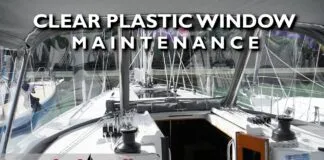
What’s The Best Vinyl Window Cleaner for Your Boat?

40-Footer Boat Tours – With Some Big Surprises! | Boat Tour

Electrical Do’s and Don’ts

Bahamas Travel Advisory: Cause for Concern?
- Privacy Policy
- Do Not Sell My Personal Information
- Online Account Activation
- Privacy Manager

Best Watermaker for Sailboat: Top Picks for Clean and Safe Water on Board
As a sailor, I understand the importance of having a reliable source of fresh water while at sea. One of the best ways to ensure a steady supply of fresh water is to invest in a watermaker for your sailboat. With so many options available on the market, it can be overwhelming to choose the best one for your needs.
After conducting extensive research and considering various factors such as efficiency, size, and power consumption, I have compiled a list of the top watermakers for sailboats. Whether you’re a liveaboard sailor or you enjoy weekend cruises, there is a watermaker on this list that will suit your needs.
Types of Watermakers
When it comes to choosing a watermaker for your sailboat, there are several types to consider. Each type has its own advantages and disadvantages, so it’s important to understand the differences between them before making a decision.
Manual Watermakers
Manual watermakers are the most basic type of watermaker. They are operated by hand and require no electricity or other power source. These watermakers are typically the most affordable option, but they also require the most effort to operate. Manual watermakers are best suited for small boats or emergency situations where power is not available.
Electric Watermakers
Electric watermakers are the most common type of watermaker. They are powered by electricity and can produce a large amount of fresh water quickly and easily. Electric watermakers are available in both AC and DC models, making them a versatile option for sailboats. However, they do require a power source, which can be a limitation for some boats.
Handheld Watermakers
Handheld watermakers are a newer type of watermaker that are designed for portability and convenience. They are typically small and lightweight, making them easy to store and transport. Handheld watermakers are powered by hand or by a small battery, and can produce a limited amount of fresh water. They are best suited for day trips or emergency situations where a larger watermaker is not available. Each type of watermaker has its own advantages and disadvantages, so it’s important to consider your specific needs and preferences when choosing a watermaker for your sailboat.
Factors to Consider
Water output.
When choosing a watermaker for your sailboat, the amount of water it can produce is an important factor to consider. You’ll want to make sure the watermaker can produce enough water to meet your needs without being too large or too expensive. Consider factors such as the size of your boat, the number of people on board, and the length of your trips when determining your freshwater needs.
Power Consumption
The power consumption of a watermaker is another important factor to consider. You’ll want to choose a watermaker that is energy efficient and won’t drain your boat’s battery. Look for models that boast about a reduction in power consumption, especially when compared to other models.
Ease of Use
You’ll want to choose a watermaker that is easy to use and operate. Consider factors such as the size and weight of the unit, the ease of installation, and the simplicity of the control panel. Look for models that are user-friendly and don’t require a lot of technical knowledge to operate.
Maintenance
Maintenance is an important consideration when choosing a watermaker for your sailboat. Look for models that are easy to maintain and don’t require a lot of upkeep. Consider factors such as the frequency of filter changes, the ease of replacing parts, and the availability of replacement parts.
Price is always a consideration when choosing a watermaker for your sailboat. Look for models that are within your budget but still meet your freshwater needs. Consider factors such as the initial cost of the unit, the cost of replacement parts, and the cost of maintenance when determining the overall cost of the watermaker.
Top Watermakers for Sailboats
As a sailor, I understand the importance of having a reliable watermaker on board. After researching and comparing various models, I have compiled a list of the top watermakers for sailboats.
The Ultra Whisper by Sea Recovery is a top-of-the-line watermaker that can run on either DC or AC power. It is designed for limited electrical options and is super quiet, making it ideal for sailboats. It can produce up to 600 gallons per day and has a compact design, making it easy to install on board.
The AMPAC USA SeaPro Saltwater Desalination RO Watermaker is a great option for small power boats or sailboats. It is designed for automatic operation and is super quiet. It can produce up to 100 gallons per day and has intuitive controls that make it easy to start and stop the desalination process with the push of a button.
The Rainman Naked 12V Watermaker is a compact and efficient option for producing fresh water on board. It is easy to set up and use, and can produce up to 30 liters of fresh water per hour for a smaller unit or up to 140 liters per hour for a larger one. It is also lightweight and can be easily transported.
The Schenker Smart 30 Watermaker is designed for sailboats and is a great option for those who want a reliable and efficient watermaker on board. It is compact, lightweight, and produces up to 30 liters of fresh water per hour. It is also energy efficient and can run on both AC and DC power.
The Spectra Ventura 150 Watermaker is a high-capacity watermaker that can produce up to 6.3 gallons per hour. It is designed for sailboats and is energy efficient, making it ideal for long trips. It also has a compact design and can be easily installed on board.
In my research for the best watermaker for sailboats, I came across several options that vary in size, efficiency, and price.
The Ventura 150 watermaker is a highly efficient option that can produce over 6 gallons of water an hour, making it perfect for small vessels. It also features a controller that allows you to operate and monitor the device remotely, which is a convenient feature for those who want to keep an eye on their water production.
The Rainman naked 12V watermaker is another great option for anyone looking for a compact, efficient way to produce fresh water. It is simple to set up and use, and it produces up to 30 liters of fresh water per hour for a smaller unit, or up to 140 liters per hour for a larger one. This watermaker is a good choice for those who want a reliable and easy-to-use option.
The AMPAC USA SeaPro Saltwater Desalination RO Watermaker is a powerful option that is designed for use on small power boats or sailboats. It can produce up to 100 gallons of fresh water per day, which is a significant amount for a small vessel. The automatic operation features intuitive controls that let you start and stop the desalination process with the push of a button, making it easy to use.
Overall, the best watermaker for your sailboat will depend on your specific needs and preferences. It is important to consider factors such as size, efficiency, and price when making your decision. I hope this article has provided you with valuable information that will help you make an informed decision when choosing a watermaker for your sailboat.
Saiful Emon is the founder and editor of Sun Sea Skis , a sailing blog for adventure seekers. He loves sailing, traveling, and sharing his experiences with others. He also writes about fitness, wellness, business, and marketing in his spare time!
Are Catamarans Good for Beginners? Learn How to Sail a Double-Hulled Boat
How to choose and use the best sailboat winter covers, leave a comment cancel reply.
Save my name, email, and website in this browser for the next time I comment.

Rainman Watermaker Review: Best Sailboat Watermaker
Rainman watermaker review – Rainman naked 12V system (economy)
We’ve done a full review of the Rainman watermaker to help you make an informed decision before you purchase.
What is a watermaker, and why do you need one?
A watermaker is a piece of equipment you can install in your boat, or any off-grid situation, to make crystal-clear drinking water from undrinkable, salty sea water and electricity.
A lot of people want a sailboat so they can travel independently and visit remote locations. A watermaker essentially removes your reliance on shore support for fresh water; drastically increasing your range and independence while making life on board a lot more comfortable to boot.
Watermakers can seem complicated at first, but they’re actually remarkably easy to install and operate – although some more than others!

As an Amazon Associate, we earn from qualifying purchases. We also earn from other affiliate programs. This means we may receive a small commission on products purchased through our links at no extra cost to you.
In this article we’re going to explain why we decided to buy watermaker in the first place; how we went about choosing a make and model; how we installed it in our cruising sailboat, and why we ultimately decided on a Rainman watermaker as the best watermaker for full-time liveaboards on a sailboat.

How does a watermaker work?
How to choose the best sailboat watermaker
Rainman watermaker review
- Power options
- Size and quantity
- Portable or permanent
- Documentation review
- Installation
How does a Rainman watermaker work?
There are a lot of different watermakers to choose between, but they mostly work in a very similar way – they’re basically pressure-washers configured to force salt water through a very fine filter at high pressure.
The filter, or “membrane”, is specially designed to remove all of the things you don’t want in your drinking water – like bacteria, viruses and salt – and only allow clean water to pass. You can drink the resulting water (it’s usually cleaner than tap water on land!), and naturally you can also use it for all your other domestic needs like cooking and cleaning.

The watermaker needs two things to work: a raw water source, like the sea, and a power source, which on a sailboat is typically your batteries and solar panels. You can get watermakers that run directly off the 12VDC / 24VDC your batteries provide, or from your inverter at 120VAC or 240VAC depending on where you are in the world.
You can also run a watermaker from a generator if you have one, which is a popular approach for boats that consume a lot of water (e.g. charters). A select few manufacturers, Rainman being one of them, even offer units that run directly off petrol – a sort of generator-and-watermaker in one. But which is the best watermaker for a cruising sailboat, and how can you choose between them?

Like anything in sailing, the absolute best sailboat watermaker for your boat depends on your needs and intended cruising pattern – but we’re going to talk you through the criteria we decided were the most important, and how that process ultimately led us to buy a Rainman watermaker.
There are a few thought-exercises we ran through before committing, such as “how much water do we currently use”, but also “do we want to use more than that after we install the watermaker”?
We thought about what we really wanted to achieve by installing our Rainman (read more on this in the Rainman watermaker review section!) – were we looking to cover our existing needs and remove our reliance on shore support, or should this represent a significant quality-of-life upgrade at the same time? And having calculated all that, did we have enough power to back it up? Here’s the thought process we went through.
Step 1: calculate your water needs

Before our Rainman watermaker review – how much water do you actually need?
If you’re reading this article, it’s likely that you don’t currently have a watermaker… and if you don’t, it’s equally likely that you have learnt how to eke out the water in your tanks for weeks or even months at a time!
Prior to installing our Rainman, Emily had perfected the art of taking a full shower in less than one litre of water (0.2 gallons). She would draw it into an empty bottle and often come out with water left over! I however am not known for my restraint and delicacy, and as such was relegated to washing in the sea. As a result of her aqueous austerity, Emily also became the underwater ceramics technician onboard Hot Chocolate (i.e. she does all our washing up, because I waste too much water). All of the above came from our tanks, while water for drinking and cooking came from shop-bought bottles.

And for us, that was the #1 thing – we wanted to remove our reliance on bottled water, because it’s horrible for the environment. It’s also super inconvenient – water was the main thing limiting our range and tying us to shore support. Water weighs 1KG per litre (8.3lb / gallon for our friends across the pond). We drink about 3L each, per day, in the heat of the summer; so we’re looking at hauling 42KG of water per week (6.6 stone) from the supermarket just to cover our basic hydration.
We often cooked in bottled water, too, because a lot of countries have heavy metals like lead and mercury in the tap water and you don’t really want your pasta with a side of poison. We calculated that we were actually getting through about 8L per day combined in food and drink alone, which meant hauling 56KG of bottled water a week under the blistering Greek sun (nearly 9 stone)… and no doubt further inflating our water requirements as a result!!

Then there’s the cost of the bottled water, which is small but does add up, and the added inconvenience of having to make regular bin runs to deal with all that plastic (~38 bottles a week). Bear in mind we’re just two people – if you have a family or regular guests, you’ll need to increase those accordingly.
A close second was the ability to shower whenever we wanted (run away to sea, they said… it’ll be romantic, they said…) – so that’s an extra litre every day or two for Emily, and an extra 10 or 20 for me! Truth be told I was quite happy washing in the sea, but it’s very nice to be able to shower in fresh water for special occasions, or be able to rinse equipment in fresh water after it’s been in the sea (e.g. knives, spearguns…).
A stretch-goal was to have enough water on tap (pun intended!) for me to become assistant-second-in-command underwater ceramics technician, and take my fair share of the washing up. We also quite liked the idea of being able to soak lines, clean the salt out of deck hardware, etc. because that’s something we typically only get to do at the start and end of the season, but that was very much viewed as a bonus. Washing the salt off your gear extends its life dramatically which can be a good way to offset the cost of a watermaker if you’re on a budget.
So in summary, we didn’t just want to cover our existing needs – we wanted a little more to play with as well – but we didn’t go as far as treating it like water on land (showers every day, washing clothes, etc). If you have a washing machine, heads that flush with fresh water, teenagers that seem to be waging war on their microbiomes with endless soapy showers… you’ll need to account for those as well.
We estimated our water needs to be:
Drinking: 3L / person / day;
Cooking: 0.5L / person / day;
Personal hygiene: 5L / person / day (e.g. a 10L shower every other day);
General needs, e.g. cleaning: 1.5L / person / day;
Total: approx. 10L / 2.2 gallons per person, per day – meaning 20L total per day.
Step 2: Calculate your power needs (and how you’re going to meet them)
Some brands of watermakers are more efficient than others, but from our own experience and from talking to others, it seems like it takes around 10 Watt-hours to make a litre of water – i.e. about 0.8 Amp-hours from a 12 volt battery. Your mileage will vary based on things like the chemistry of your battery bank, the length of your cable runs, and even the temperature of the sea, but that seems to be a pretty usable yardstick.
Our Rainman watermaker draws about 28A when it’s running, and makes about 34 litres per hour.
Because we’re full-time liveaboards, and working remotely from the boat as well, we already have quite a lot of solar – for a monohull, at least – 360 Watts of mono panels. In theory they should push a good 30 Amps into the batteries in full sun, but in practice it peaks at more like 20A and we make a total of 2.2kWh (2200Wh) in an average day.
We need to make 20L of water per day to keep up; that means we need to allocate 200 Watt-hours from the 2200 we make in a day; i.e., installing our Rainman increased our overall power needs by about 10%.
For comparison, Emily’s laptop draws about 90W an hour and mine draws 120W, so running our Rainman watermaker for an hour a day is about the same as running both our laptops for the same period. A 12V fridge often draws about 3 amps, so about 36W – meaning keeping the fridge running consumes ~850Wh per day, about 4 times more than our watermaker.
Honestly, I imagined it would take a lot more!
Of course, our solar output drops drastically as the Autumn / Fall rolls in, but then so do our water needs… so it’ll be interesting to see how that pans out and whether we’ll need to augment it with fossils fuels, e.g. making water after motoring.
⚡ Note: We have recently upgraded our battery setup to lithium marine batteries from the wonderful BattleBorn. We highly recommend them. You can find out more here . ⚡
See the FAQs at the end for more information.
Step 3: Your cruising pattern
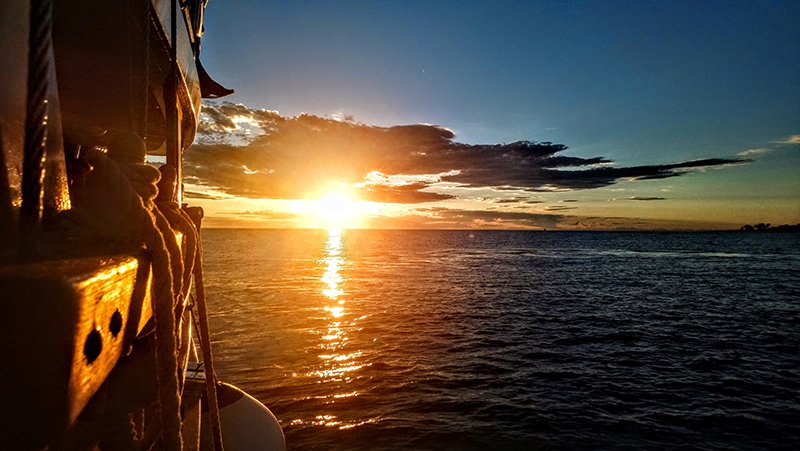
Everyone’s needs are different, and it’s important to factor them in when choosing a watermaker.
One of the main reasons we were drawn to Rainman watermakers is that they use all off-the-shelf, standardised parts. If your Rainman breaks down, it almost doesn’t matter where in the world you are – you’ll likely be able to get standardised spares in the nearest major city. We won’t name any names, but in our quest to identify the best watermaker for our sailboat we discovered that a lot of manufacturers use proprietary parts – ones you can only get from the manufacturer.
We considered this to be extremely undesirable, because
(i) as a cruising sailboat, we want to be able to service our watermaker anywhere in the world
(ii) it can lead to price-gouging, i.e. they can charge whatever they want for spares because you can’t get them anywhere else; and
(iii) – it demonstrates an astonishing lack of awareness on the part of the manufacturer.

Your mileage may vary, but we bought a watermaker for the independence. In fact, we more or less bought the whole boat for independence! Trading a reliance on bottled water for a reliance on obscure, single-source, non-standard parts completely defeats the object.
I have worked in technology all of my life, and for every instance where proprietary parts were truly necessary I could show you 20 more where it was simply an attempt to create a “walled garden” and force you to buy overpriced spares from the manufacturer themselves. In a further handful of cases, it’s to force planned obsolescence and make you throw away an old unit rather than repairing it – which again, is the opposite of how we try to live.
In a non-watermaker example, this is exactly the reason we were forced to replace our windlass in our first season. A simple, $5 helical gear stripped, but because it was proprietary and the manufacturer had long since gone bust, we had no option but to replace it in its entirety – at a cost of about $1500, and all the needless waste accompanying it. We found a machine shop who could copy the stripped gear, but it would have cost nearly $1000 anyway after set-up costs. Not everyone will agree with us but we found that a horrible waste and just an awful design philosophy, and we cursed that manufacturer in a way that would make Blackbeard blush as we hauled up 80M of muddy chain by hand…!

So try to think about your intended cruising patterns and how awkward it would be if you needed spares. If you typically cruise the same grounds, it’s unlikely to affect you that much. If you’re planning an expedition or a circumnavigation however, you’re likely to want to look for manufacturers with a practical design philosophy like Rainman.
Ask around in forums and social media groups and try to gauge what it’s like to deal with the manufacturer. How self-serviceable are the units? How reliable are they? Again, this is something that led us straight to Rainman watermakers. The units have a reputation for being absolutely bulletproof; the pre-sale communication was outstanding, you can get spares anywhere in the world and (nerd alert) the documentation is outstanding too.
Although we eventually went for a fully-installed unit, we also loved the fact you could get a portable version that stows away in a locker or can even been taken in a bail-out situation if you have a 12V source to run it from. You can use the same Rainman watermaker in salt water or brackish (mixed salt and fresh) just by adjusting the pressure level, where some manufacturers require you to purchase a specific unit for each. While we didn’t actually need a lot of these features we appreciated that Rainman was grounded in real-world use cases and had given us that flexibility.
You should also consider if you really need a watermaker. Yes, they are wonderful. Yes, they are basically magic. Yes, it would be nice to be able to stand downwind of your significant other without a peg on your nose. But they also cost about $5,000, and you do have to keep using them every 2-3 days or fill them with pickling solution, else they will foul up and ruin the membranes (Rainman has an “autoflush” unit that makes this a lot easier, see below). If you don’t live aboard full time, you might actually find it an inconvenience!
Rainman Watermaker Review: Rainman 12V Naked
Having considered all of this, let’s talk about the Rainman Naked 12V unit we eventually bought, and why – although the reasons should already be becoming apparent! Here is our honest Rainman watermaker review – warts and all.
Rainman Watermaker Review – The Parts

A Rainman system comes in a few separate parts, which you can configure to suit your needs.
The pressure supply unit, aka. PSU. This is the pump that draws water from the sea, and then pressurises it ready to be forced through the membrane.
The RO unit. RO stands for reverse osmosis, which is the process a watermaker uses to filter the water. The RO unit therefore is a long tube containing the specialist filters that let it separate clean drinking water from salty sea water. The PSU pressurises sea water and sends it into the RO unit. Out of the other end, you get a small amount of pure, clean, drinking water, and the waste product – brine.
Control panel. Rainman make an optional control panel that lets you start and control the unit remotely from somewhere else in the boat. We installed our Rainmain in a pretty awkward location (in a lazarette under the cockpit), so we were very grateful to be able to mount the control panel somewhere rather more accessible! The control panel has instruments that tell you the pressure the system is operating at, how much water you’re making, and even the quality of the water (via a traffic-light system). You can also use it to control the autoflush function (see below).

Autoflush. Another optional extra, but one we would highly recommend. As detailed earlier in the article, you have to run a watermaker very regularly else marine life will grow on the filters and ruin them. The best antidote is regular, even daily, use, but you can also fill the unit with “pickling” solution that stops the fouling from growing. Generally speaking, that means you run the watermaker 2 – 3 times a week while living aboard, and then pickle it in the off-season when the boat is on the hard standing or home berth. It’s a bit of a pain, but not nearly as annoying as lugging 50KG of water from the nearest supermarket and / or chronic dehydration.
Enter the autoflush. Once a week, or at another interval of your choosing, the autoflush will open a valve and take fresh water from your tanks to flush the membrane and prevent fouling. This extends the life of the membranes significantly and removes human error from the equation. Considering an average sailboat has north of 10,000 moving parts to worry about, we’re big fans of anything that essentially maintains itself! You’ll still need to pickle if you don’t run the unit for 30 days, but if you’re like us and can stretch a tank of water to 14 days or more it’s really convenient.
Rainman Watermaker Review – Your Power Options

When specifying a Rainman system, you have three basic choices to make :
- Power source
- Portable (cased) or permanently installed (naked!)
Power source. When buying a Rainman, you can choose between three different power sources:
- AC electric . An AC electric unit runs off mains power, i.e. 120VAC or 240VAC depending on where you are in the world. That mains power in turn can come from a few sources: if you have an inverter, like many cruising sailboats, you’re already making mains power from the 12VDC / 24VDC supplied by your battery bank. You’ll need an inverter that can supply 1250W, although 1500W is recommended. You can also get mains power from the shore, via your shore power connector – although if you spend a lot of time on shore power you might not need a watermaker at all! If you have a generator on board, there’s a high probability your generator is also outputting mains power as well. AC electric units are much faster than DC, and can produce about 4X as much water per hour – while consuming about 3X the power, so they’re more efficient as well. The best option for boats that meet the power requirements, particularly larger boats, boats with power to spare, boats with high water consumption (e.g. charters).
- DC electric . This is the option we chose, for reasons we’ll explain. DC electric means the unit runs directly off your 12VDC batteries. At the time of writing, I don’t believe Rainman make a 24VDC unit, but 24VDC boats can just use the AC version above via an inverter.
The DC version makes a lot less water per hour than the AC version, because of nerdy reasons related to DC and current. A DC system tops out at 34 litres per hour, where an AC can make up to 140. They’re also somewhat less efficient, although if you’re using an inverter to make AC you should bear in mind your inverter is typically wasting 10 – 20% in the process so the numbers aren’t quite as clear-cut as they seem.
It’s marginally quieter than the AC system, but you need to be able to position it fairly close to your battery bank because again, nerdy reasons to do with DC.
We chose the DC unit because:
- Our inverter is only 1200W, and we didn’t want to have to upgrade it to meet the requirement.
- Our generator is also only 1000W, and we prefer not to use it unless we have to.
- Our water needs are only ~20L a day, so we didn’t really care about making water slowly. One hour a day would easily cover out needs.
- We could easily install the Rainman 3ft from the battery bank, so the cable run wasn’t an issue.
- Petrol. Rainman also make a unit that runs directly off dead dinosaurs. Essentially, it’s a suitcase generator like the popular Honda EU-series with a pressure supply unit bolted on (the genset inside is actually a Honda GXH50 4 stroke). It’s a great idea, particularly if you’re using a Rainman in a non-boat scenario (bugout cabin, disaster relief, etc). You can burn fossil fuels directly to make water without the need for a separate generator. I can definitely see the applications, and although it wasn’t relevant for us, it’s another example of how Rainman’s design philosophy seems firmly grounded in the real world. If you liked the sound of the control panel or the autoflush unit, bear in mind you can’t use them with a petrol unit. Rainman says the unit burns about 600ml of petrol per hour, which at today’s gas prices is about EUR 0.70 per hour, or one Euro of fuel for 200L of water.
Rainman Watermaker Review – Size and Quantity Options

Once you’ve decided on a power source, you can then choose the size and quantity of RO membranes to go with it:
- The AC and petrol units can both take two full-size membranes for maximum output – and you’re encouraged to go down that route, because the increase in water output far outstrips the increase in power consumption. Alternatively, you can fit one full-size membrane if you’re really on a budget, or there’s a cute compact unit with two half-size membranes if you’re seriously short on space and/or weight! For 90+% of boats the first option is the best and there isn’t much reason to consider the others. With two full-size membranes you can expect to make 100 – 140 litres of water per hour. With a single membrane, or the two half-size units, you’ll make 50 – 70.
- The DC unit only supports a single full-size membrane – there are no other options. You’ll also make less water than an AC or petrol unit using the same membrane – about 30 litres per hour. If you’re a family, or you have high water needs for some other reason, you’ll likely want to try to get up to an AC unit with two membranes as you’ll make up to 5X as much water per hour. For us, that wasn’t really relevant – it was the difference between making water for 20-30 minutes a day, or an hour. It didn’t seem worth upgrading our inverter or buying a larger genset.
Rainman Watermaker Review – Portable or Permanently Installed

And finally, decide whether you prefer a portable (cased) or permanently-installed (naked!) system:
- If you want petrol, it only comes in the portable, cased form factor. Note that you can’t use the control panel or the autoflush with portable form factors.
- AC or DC electric units can either be portable or permanently installed. The same caveats apply regarding the autoflush and control panel. The cased form-factors come in a rugged, blue plastic case that seems like it will stand up to a lot of abuse.
Portable systems are good if you simply don’t have space to permanently install the unit, and they offer the flexibility of being able to stow your Rainman in a locker when not in use. The PSU needs to stay quite cool while in use, and operating the unit in the open air is a pretty solid guarantee that it will. They’re also great if you don’t have a spare through-hull and you don’t fancy cutting a hole in your boat – you just dangle the hose over the side, making sure it’s good and deep but not amongst any fouling. However, you add a lot of man-hours to your watermaking operation (setting up, packing down, manually flushing…), which should definitely be factored in. You can’t autoflush, and you’re more likely to make a mistake – sucking up air or fouling can damage the unit, and the more times you manually dangle a hose over the side the greater your chances of doing so.
On Hot Chocolate, we already had two perfect, spare through-hulls from where the engine-driven fridge compressor used to be. One of them is deep down in the keel, allowing for a clean bite of water with near-zero chance of fouling or air bubbles. We can make water while underway without needing to watch the hose. The latter was perfectly positioned above the waterline so we can observe the brine output and check it for bubbles (part of the procedure for making water). This made choosing a naked system a no-brainer for us, but I think even if we didn’t have the spare holes in the boat we would probably have made the same decision.
And that’s it – that’s your three basic choices . If you went for a naked system you have a further two optional extras in the form of the control panel and autoflush, both of which represent pretty significant quality-of-life upgrades if you can afford them – but it’s still a fantastic piece of kit if you can’t!
Rainman watermaker review of the installation documentation
I know we’ve already mentioned this, but the documentation is really excellent and it’s clear there has been a lot of thought put into the product. It’s evident Rainman expect people to self-install, whereas when we spoke to one of their competitors (who we won’t name!) they stated “if you need to ask us any questions you shouldn’t be installing it”! Again, this shows a level of pragmatism, forward thinking and just common sense on Rainman’s part that we sometimes found lacking in competitors.
If you’re a manufacturer reading this, please understand that cruising yachts absolutely are going to install and maintain their own electronics, and we’ll desert you in droves if you try to lock us out!
Reviewing the Rainman watermaker installation process

We were pleasantly surprised to find that the unit came with almost everything we needed to install it. We were expecting to supply our own hoses, sundries, etc. but Rainman supplies everything you need – hoses, jubilee clips, hose splitters, T-valves… while we were installing it our local chandlery told us a horror story about a boat who had been waiting eight weeks for a replacement hose for their non-Rainman watermaker, so we greatly appreciated the completeness of the kit! I believe the only items we had to add was a splitter to tee the fresh water output into our tank, because we have the flexible plastic variety and the supplied fittings assumed a conventional solid tank. We happened to have one on board, so our additional material overheads were exactly $0.
Installation was really very straightforward. End-to-end it took me two days to install and test the unit, plus an extra day to get the autoflush set up.
We had a tiny teething problem in that one of the hoses was supplied with an adaptor, and we needed to remove it to screw it in correctly. We raised a ticket with Rainman, they replied in about 2 hours, and had already followed up to see if we were sorted by the time we read their first email!
Only basic hand tools were required to complete the installation, and in fact most of the connections are toolless (e.g. push-fit connectors). We’re now about three weeks into our ownership, and so far, I can honestly say we don’t have a bad word to say about either the company or the unit itself. Our intention is to update this in 6 – 12 months once we’ve had our Rainman for a season and let you know how it shapes up!
Our Rainman arrived from Australia to Greece in a little under 3 weeks, although Greek customs took a further 3 weeks to clear! We ended up having to pay a total of EUR 1100 in VAT and import duties, which was about what we expected. We’ve heard of people not getting charged anything, so it seems to be a bit of a lottery. The biggest hurdle we faced importing it was getting an EORI number (a Greek tax code for imports worth more than EUR 1000). We ended up using our boatyard’s EORI number, meaning they paid customs and we paid them back.

If you have any questions about Rainman or watermakers in general, feel free to use the comments section below and we’ll do our best to help. We’ve also tried to compile some answers to the questions we had when we started this journey and some of the most common ones you see online ( find this section below ). If this review was useful to you, please consider sharing it or joining our newsletter for more quality content and awful puns!
Check out Rainman products here.
Can I run a watermaker off an alternator?
Yes, you can use the power from your alternator while motoring to run your watermaker. Just be aware that if you’re underway, you might be creating bubbles… and if you suck up a bubble it can damage your membranes. Make sure the intake hose is good and deep and your wake is free of bubbles, or just bank the power and make water when you get to the other end.
Can you drink water from a watermaker? Is it good / bad for you?
Absolutely. When your watermaker is functioning correctly it should make water with around 300PPM (parts per million) of contaminants. Safe drinking water is usually 500 – 800, so in most cases, it’s actually cleaner than the water you usually drink!
How to take care of a sailboat watermaker
The number one enemy of watermakers is fouling. When you suck up sea water, it contains billions of microorganisms like plants and algae. Your watermaker filters them out, but some of them get caught in the membrane and can start to grow. The best way to take care of a watermaker is to run it very regularly to flush the microorganisms out before they get a chance to take hold. Run your watermaker every 2 – 3 days minimum, pickle it when not in use, and strongly consider getting a system with an autoflush function like a Rainman – it will make your life a lot easier.
How much water does a Rainman watermaker produce?
It varies, but between 30 litres an hour for a smaller unit or up to 140 litres an hour for a larger unit.
How much electricity does a sailboat watermaker need?
It depends on the size of the watermaker, but basic units consume around 400W, and bigger units around 1.2kW.
Can I run a watermaker off solar power? Do I need a generator if I have a watermaker?
Absolutely, you can run a watermaker off solar power. We have a 400W unit that we run from our 360W panels, via our 12V battery bank. We rarely need to generate in order to make water.
12V vs mains-powered watermakers
Mains-powered watermakers are generally more efficient, producing more water both per Watt and per hour. However, you need a fairly large inverter or generator to use a mains-powered unit. We opted for a 12V system because we didn’t need the speed of a mains-powered system, and we didn’t want to have to upgrade our inverter to accommodate one. You can find more information about why we chose a DC system in the body of this review.
Can you use a watermaker to make water from a river?
Some watermakers can make water from brackish water as well as salt. Some manufacturers require you to specify at the point of purchase, whereas others (like the Rainman) can handle it with a simple pressure adjustment. Just be sure to read and follow the manual carefully or you can damage your membrane.
Solar still vs boat watermaker?
A solar still is a device that makes clean water by evaporating sea water. It’s a great piece of kit to have in a grab-bag, particularly if you’re attempting a longer passage. You can get inflatable solar stills that fold down to the size of a pack of cards. Solar stills are excellent emergency gear but not a replacement for a watermaker, because they typically only make 1-2 litres per 24 hours – vs 2,000+ litres per 24 hours for a watermaker. Their principal advantages are portability and the fact they don’t need any electricity to operate. Both have a home on an ocean-going sailboat!

DIY watermakers
A number of plans circulate online for DIY watermakers. Watermakers are essentially pressure washers that force sea water through a membrane or filter to produce clean drinking water. It’s reportedly possible to build your own using off-the-shelf components (like pressure washers!), and save perhaps $1000 vs buying a pre-configured watermaker. While we’ve heard a lot about the concept over the years, we’re yet to meet a sailor who has built one themselves. Let us know in the comments if you’ve built one and how it’s working out for you!
Watermakers VS Brita filters, filter jugs, lifestraw, etc.
What’s the difference between a water filter jug and a watermaker, and why does one cost $10 while the other costs ~$5000?
Filter jugs use filtration and something called “ion exchange”, meaning the water trickles through a pad made of something like cotton to remove large particles, and activated charcoal or ion exchange resin which reacts with and “grabs” semi-volatile organic compounds out of the water. Sometimes they also use silver, which is antimicrobial, or UV light to kill out bugs. Filter jugs typically can’t remove heavy metals like lead and mercury, and they certainly can’t desalinate water (remove the salt and make it safe to drink). For that level of filtration you need to pressurise the water and use a much more sophisticated filter called a “reverse osmosis” membrane, hence the cost and complexity of a watermaker. The closest cheap equivalent is a solar still (see above).
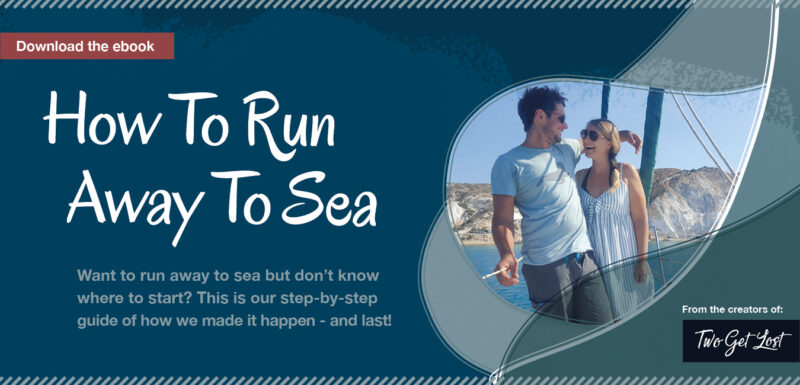
Similar Posts

13 Best Small Catamarans For Cruising 2024

The 11 Best Sailing Hats 2024: Top Yachting Headware

Top Ways To Get Fresh Water On A Sailboat

22 Sailing Movies You Must Watch In 2024

Sailing Terms: A Complete Guide 2024

The 13 Best Sailing Watches For Serious Sailors 2024
13 comments.
Thanks for the detailed review and analysis of the various pros and cons. I plan to get a Rainman for my boat – also in Greece and am weighing up the options. Good practical advice about the autoflush option! Also, I notice you didn’t buy it from the Greek distributor – is there a reason?
Hello, thanks for the comment, and glad it was useful. We have to admit that out of all the upgrades we’ve made to the boat, this is the one that has run the smoothest – the whole process. We’re very, very happy! The reason we didn’t buy from Greece was as simple as price. Adam actually emailed Rainman with a whole bunch of questions (he likes to do his research!) and they cut us a very good deal that made it cheaper to buy from them. It was marginal though so if we hadn’t been out of the water all winter and had been in a rush to get our hands on it we would have bought from Greece. Hope that helps!
This is the best watermaker review I’ve read, haha! I was going to buy Spectra but now I’m seriously considering Rainman.
Thanks! Honestly would recommend it. Let us know which you go for and how you get on!
A very comprehensive and informative review, I’ve been researching these products for some time and can find very little to help me make a decision, can you also let me know how long you’ve had yours and if this has been reliable? I really want to make the right decision when I get one.
Hello, thanks for the comment. Glad we could help! We’ve had ours for a year now and it’s one of those bits of boat equipment that we just don’t think about because it works so seamlessly. Probably the best thing we’ve invested in for the boat (it was expensive but worth every penny!) Let us know if you go for the Rainman and how you get on.
Will do. I follow your blog closely, I’m a big fan of your lifestyle and your honest writing style.
what a great article, I love how honest and balanced this is. 5 stars
Thanks Rachel, really glad you found this useful and hope you do go for a Rainman watermaker. It’s one of the best purchases we’ve made for the boat!
So, you don’t g the specifications for the 12 volt model, what is the AMP versus gallon output ?.
was sent this article by a friend and it did not dissapoint. very thorough and clear explanation. can you review spectra next? ty
Thanks for your feedback and so pleased you found the watermaker review useful. If we ever go a different route in the future we will definitely give some honest feedback on whatever watermaker we opt for!
Comments are closed.

- Center Consoles
- Dual Consoles
- Motoryachts
- Sport Cruisers
- Tenders & Ribs
- U.S. Atlantic
- Engine Buyers Guide
- Electronics
Watermakers for Boats: The Right One Is Pure Bliss
Fill ’er up.
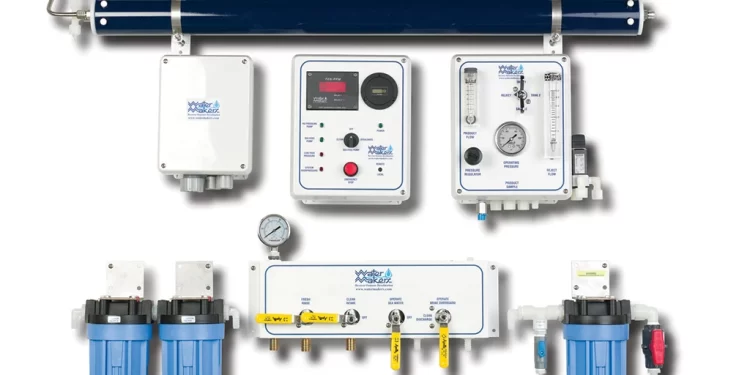
Watermakers' WMS-1000
Watermakers for boats turn seawater fresh.
How watermakers for boats work: the science of seawater conversion, compact and efficient.
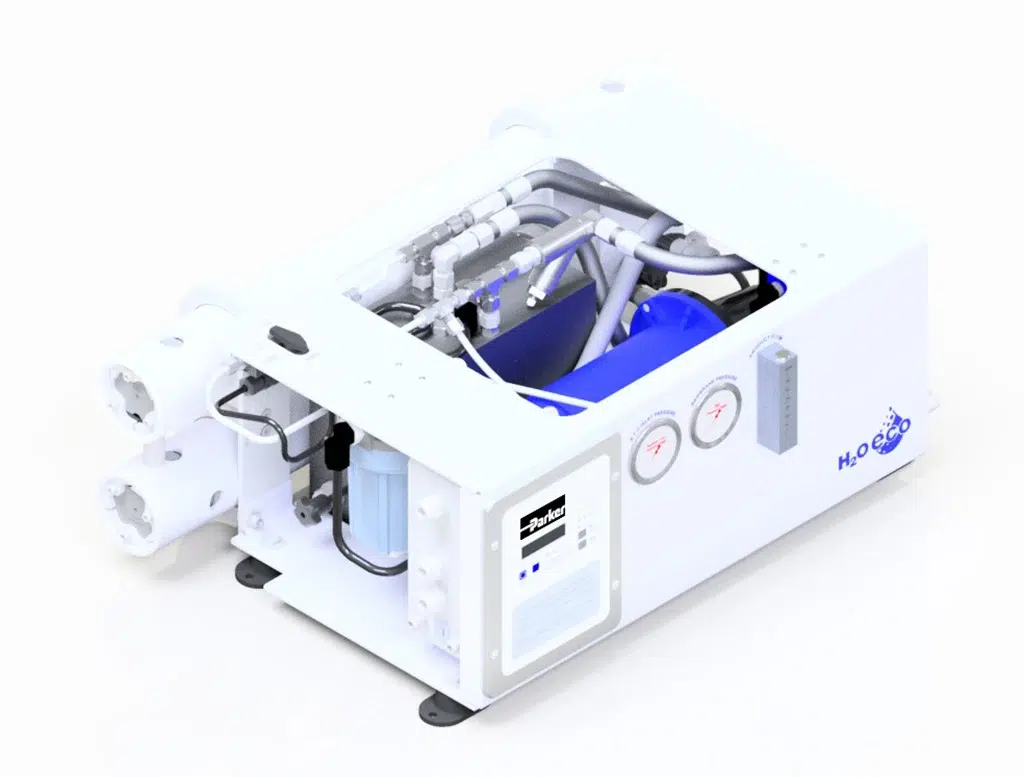
You Get What You Pay For
Choosing the right watermaker for your vessel: what you need to know.
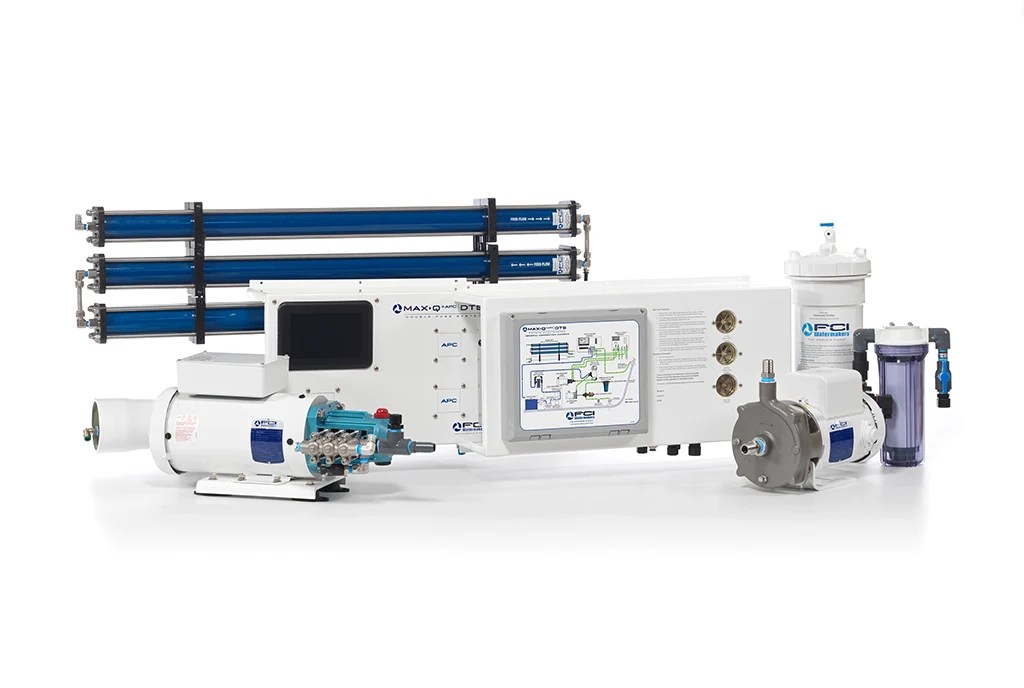
How Do Watermakers Work?
Boxed or Modular
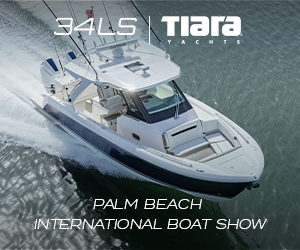
Recommended
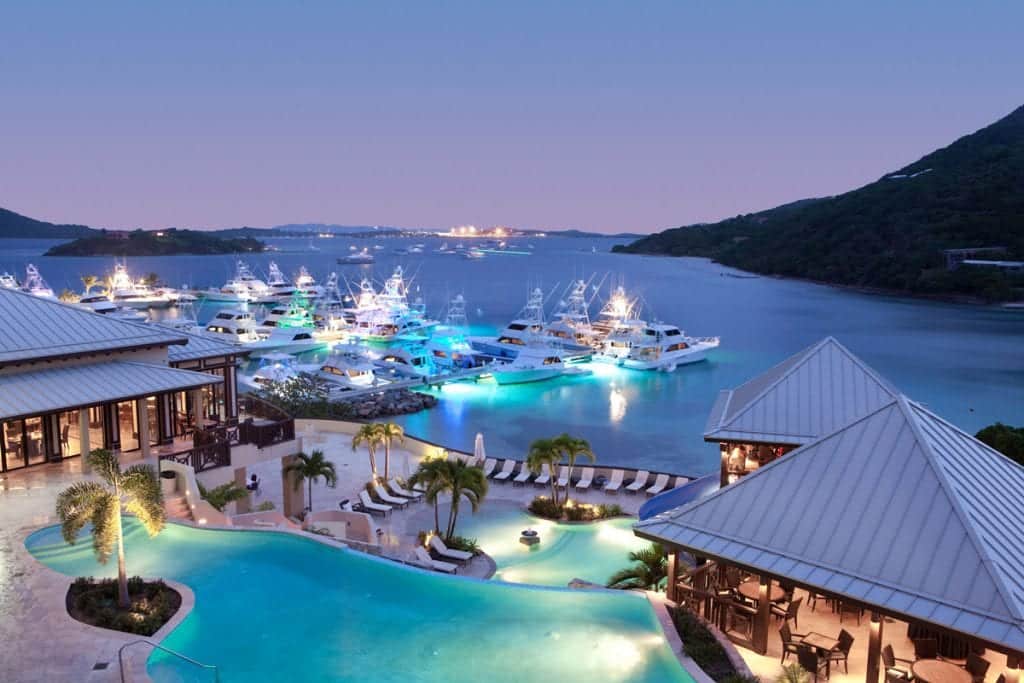
Scrub Island
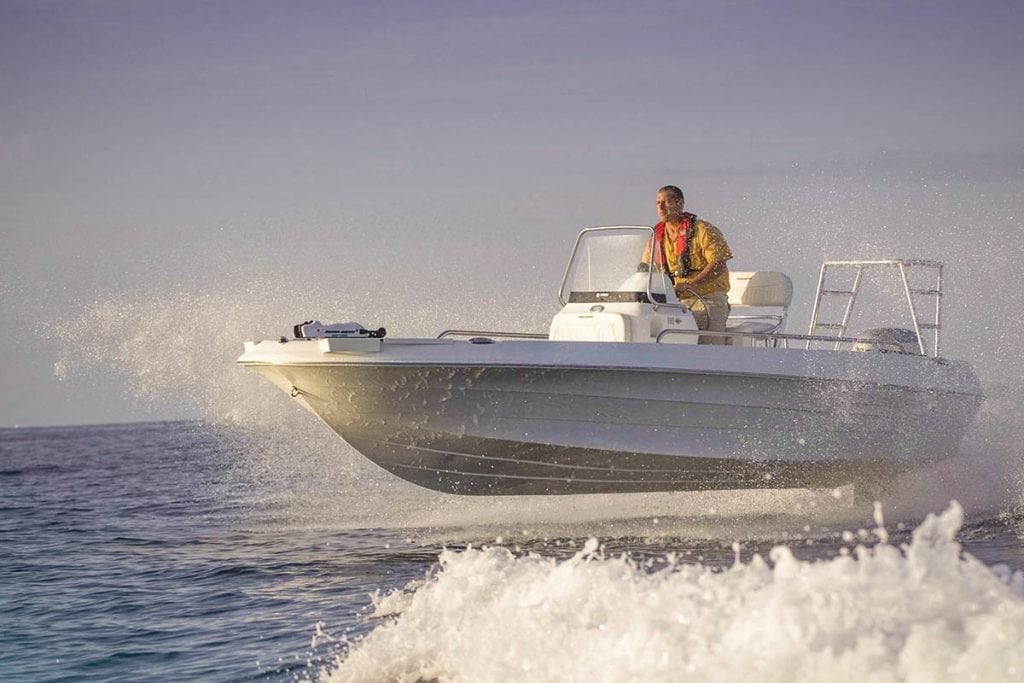
Small Boat Performance
Don't miss it.

Why would the Fed cut their overnight lending rate?

Inboard Cooling System Maintenance: Practical Tips for Performance And Longevity

The Solara S-310 Sport Coupe: A New Era of Open-Air Boating

Ranieri International Appoints Madison Bay Holdings the Exclusive Representative Throughout The Americas

New Podcast Episode: Palm Beach International Boat Show Preview

The Race Between Semiconductors, Gold, and Cocoa Heats Up!
- Privacy Policy

1591 E. Atlantic Blvd, 2nd Floor Pompano Beach, FL 33060 Office: +1 (954) 522-5515 Fax: +1 (954) 522-2260 Contact us: [email protected]
Email address
© 2024 Southern Boating Media

What Are the Best Watermakers for Sailboats?
Navigating the diverse landscape of watermakers for sailboats can be a complex undertaking, given the variety of technologies available. Prospective buyers encounter a range of options, from compact manual systems to advanced automated units, each tailored to address specific water purification needs. Desalination methods, such as reverse osmosis, contribute to the diversity of available choices. Factors such as boat size, power requirements, maintenance, and freshwater output demand careful consideration to determine the most suitable watermaker for a given sailing scenario. Recognizing the challenges faced by sailing enthusiasts, EchoTec Watermakers aims to streamline the selection process by providing comprehensive information and tailored solutions. What are the best watermakers for sailboats ? Continue reading below to learn more.
Can You Run a Watermaker While Sailing?
Running a watermaker while sailing is indeed a viable option, and many modern sailboats are equipped with systems designed for precisely this purpose. The feasibility of operating a watermaker during sailing largely depends on the specific technology employed and the boat’s power capabilities. Commonly, sailboats utilize energy-efficient desalination systems for boats, particularly those based on reverse osmosis, which can be powered by the boat’s existing electrical system or alternative energy sources such as solar panels or wind turbines.
What Are the Smallest Watermakers for Sailboats?
Many sailboats can be cramped. This is when having a small watermaker can be advantageous. Some of the smallest watermakers that we offer include:
- 12/24v DC Economy Watermakers
- 12 – 180v DC Watermakers
- Belt-Driven DC Watermakers (Modular)
- 115/230v AC Economy Watermakers
What Are the Best Watermakers in the USA?
If you are asking yourself: “what are the best watermakers for sailboats?,” you are going to want to know what makes ECHOTec the best manufacturer in the United States. As a top manufacturer, EchoTec Watermakers excels in harnessing cutting-edge desalination methods like solar desalination , with a particular focus on reverse osmosis technology. The company’s systems boast unparalleled efficiency, ensuring optimal freshwater production while minimizing energy consumption. EchoTec’s commitment to sustainability is evident in its integration of eco-friendly features, such as energy recovery systems and robust materials with minimal environmental impact. Additionally, the company’s dedication to user-friendly design and robust customer support positions EchoTec Watermakers as a reliable partner for sailors and off-grid enthusiasts.
More About ECHOTec Watermakers
We are proud to offer much more than desalinators for sailboats. Our full selection of products includes home desalination systems and systems meant for off-the-grid living. Contact us today to learn more.
Leave a comment Cancel reply
Save my name, email, and website in this browser for the next time I comment.
You May Also Like
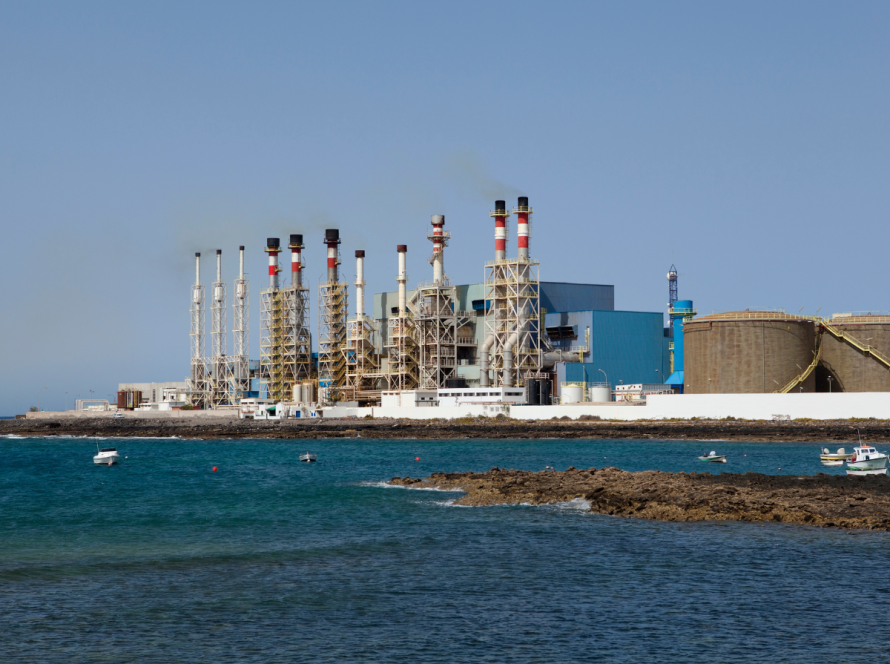
About Industrial Desalination Machines
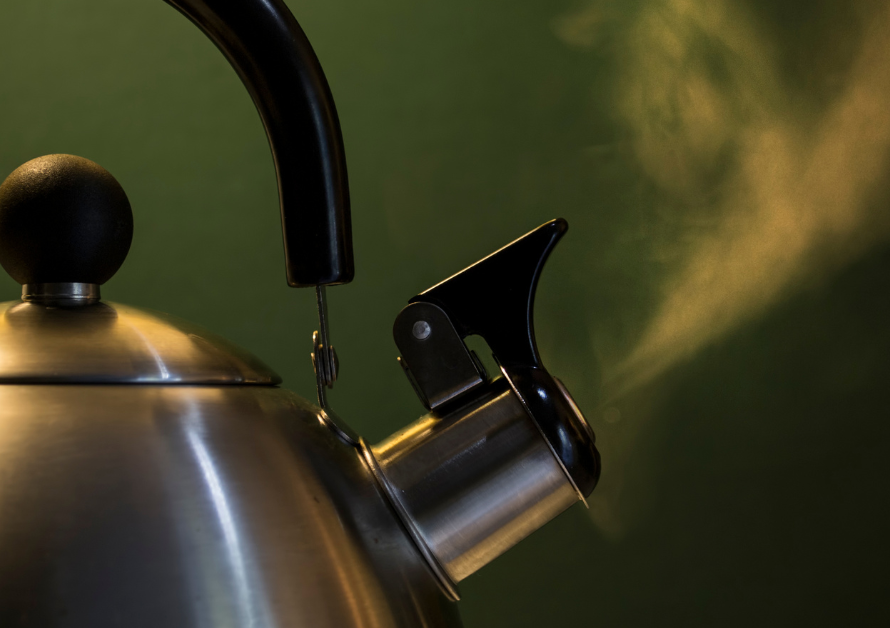
Can You Boil Seawater to Drink?
- BOAT OF THE YEAR
- Newsletters
- Sailboat Reviews
- Boating Safety
- Sailing Totem
- Charter Resources
- Destinations
- Galley Recipes
- Living Aboard
- Sails and Rigging
- Maintenance
- Best Marine Electronics & Technology

How to Install a Watermaker in a Sailboat
- By Ellen Massey Leonard
- Updated: March 26, 2018
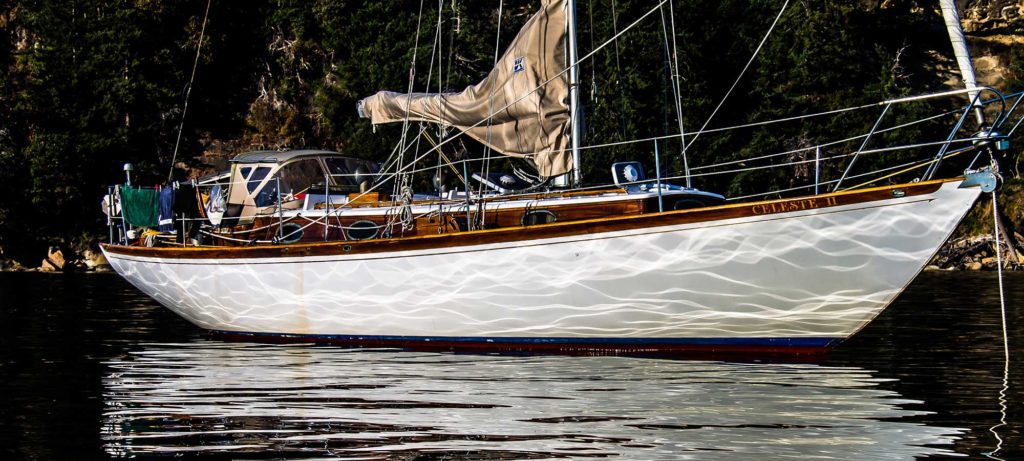
Fresh water is one of the few things the human body cannot do without. A person can survive several weeks without food but only three or four days without water. This is why the logs of explorers such as James Cook are filled with references to anchorages where rivers were found, descriptions of long days working to replenish the ship’s water supply and worried remarks about the number of casks found sour in the hold midocean. The tales of voyaging yachts, such as John Guzzwell’s Trekka and Frank Wightman’s Wylo, also devote paragraphs to rain catchment and refilling the tanks in port. This was our situation when my husband, Seth, and I set off as cash-strapped college kids to circumnavigate aboard a vessel much more akin to the home-built Wylo than anything on the market today. We tried catching rain, we took seawater showers and we spent long days in remote anchorages hauling buckets of fresh water from shore to our boat.
In spring 2014, however, as we were preparing for our current voyage to the Arctic on our new-to-us boat, Celeste , Seth and I learned of Katadyn’s PowerSurvivor 40E, an efficient, low-draw watermaker. We’d been worried about our water supply for this journey because Celeste carried only half the water capacity of the heavy-displacement vessel on which we’d circumnavigated and yet the Arctic is a desert — water would be expensive or even impossible to obtain there. We debated filling the bilge with gallon jugs, à la cruiser Annie Hill, but didn’t want the extra weight pushing down our waterline. So, we approached Katadyn (now called Katadyn Group, with watermakers branded under the name Spectra) with a sponsorship proposal for our Arctic voyage and were soon the owners of a new 4 amp, 1.5-gallon-per-hour desalinator that we could operate manually in the event of a power failure.
Compact and relatively lightweight, the PowerSurvivor was simple and straightforward to install. Seth and I decided to fit it in a locker in the head, and we found that we could still stow the locker’s previous contents (mostly toilet paper and paper towels) without any trouble. We chose the head locker for several reasons: It was a convenient location for installation and servicing; it provided easy access to a saltwater intake and a drain; and it was a dry area free of fuel vapors or excessive heat, as stipulated by the owner’s manual. Our classic cutter was on the hard when we performed the installation, although it would be simple enough to do in the water; the only difference is that you would have to close the seacocks.
As with many boat projects, the key to a hassle-free installation is the preparation: It’s important to configure as many of the hoses and electrical connections as possible before affixing the watermaker itself. The PowerSurvivor came with everything we needed that was not specific to Celeste , including valves, hoses and hose clamps. Our first step was to fit a strainer and T-valve on the saltwater intake hose. This allowed us to use the intake either for its original function of flushing the head or for the reverse-osmosis system (though you wouldn’t want to do both at the same time!). The through-hull had the advantage of being at a low point on our hull, minimizing the chance of air intake while heeling or in rough conditions. It was also ¾ inch wide, satisfying the requirement of at least ½ inch for the desalinator, and of course, it had a seacock for safety.
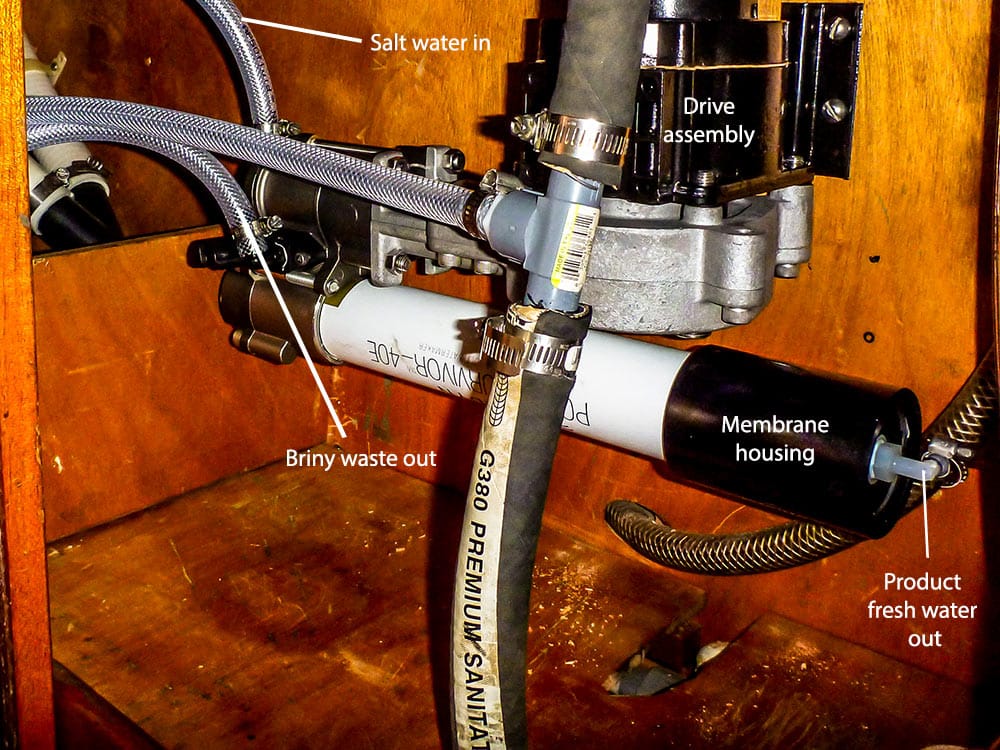
We then cut our sink’s drain hose and fit another T-valve for the briny waste to exit the boat. We also mounted a three-way valve for the fresh water coming out of the desalinator. This let us run the fresh water either through a ¼-inch-inner-diameter tube to test the water or to fill jerry jugs, or — once we’d tested the desalinated water’s quality — through a 3⁄8-inch reinforced plastic hose to a T-valve we inserted into our starboard tank’s vent.
Next came the electrical connections. Using 14-gauge tinned, stranded copper wire, we ran power from our main circuit-breaker panel to a terminal bar in the locker with the watermaker. Once we had hooked up the wires that came with the PowerSurvivor to that terminal bar, the watermaker had its own switch on the breaker panel to turn it on and off.
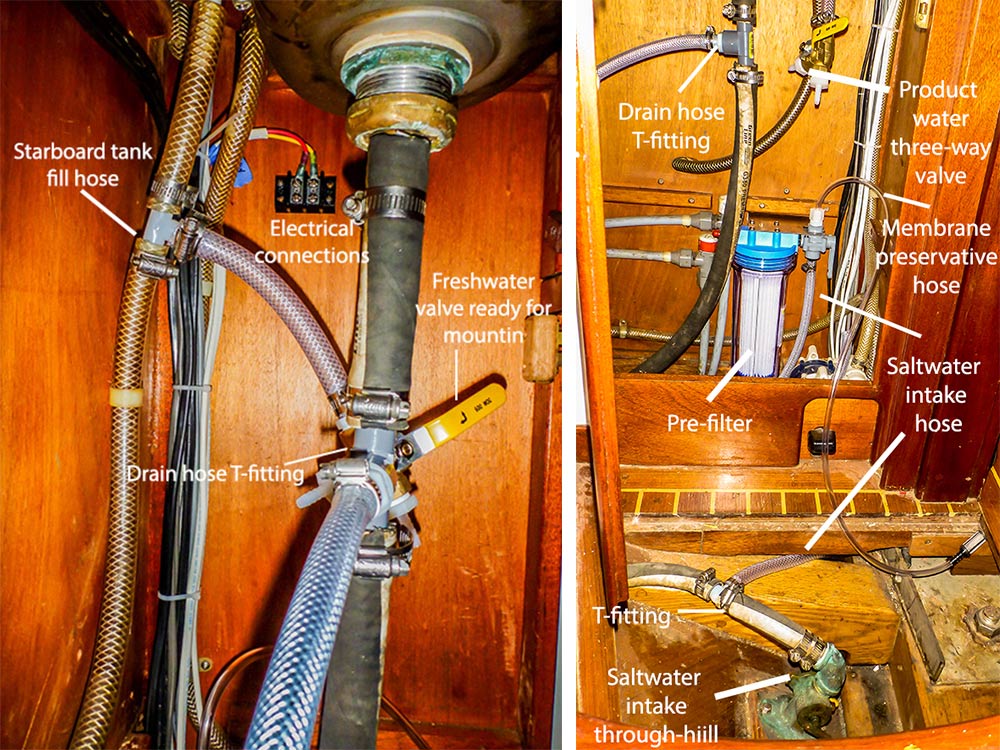
We then mounted the pre-filter below the pump intake, as recommended by Katadyn’s engineers, to allow air bubbles to pass easily. There was plenty of room for it alongside our pressure-water hoses, and even room to mount a silt-reduction filter if we needed it for brackish or shallow water, inland waterways or areas of glacial runoff, this last being the most likely on our present voyage. The pre-filter should be mounted vertically and through-bolted with stainless-steel hardware. Its three-way valve — which allows you to choose between seawater intake for regular operation and another hose for membrane-cleaning solution — should be sealed with nonhardening paste, such as Loctite 5331, for an airtight seal. We also mounted the pre-filter in a part of the locker that’s easily accessible for maintenance, which includes inspecting and emptying the housing, cleaning the filter regularly and treating the membrane any time we won’t be using it for a week or more. In the tropics, this time frame is closer to three days, but in higher latitudes, the cold water and air keep algae growth down a little longer.
With all that completed, it was time to mount the drive assembly/pump/membrane unit. The trickiest part was holding the 25-pound device in place while Seth marked its position. Seth then drilled the holes in the bulkhead, after which I held up the PowerSurvivor while he fitted the first two ¼-inch stainless-steel bolts. With the desalinator firmly in place, the second two bolts were easy. We made sure to mount the desalinator with the long axis of the membrane in a horizontal position; to do otherwise would risk ruining either the drive assembly (if the pump developed a seawater leak) or the pump (if the drive assembly developed an oil leak).
Because we had installed all the hoses in advance, the only thing that remained was to plug in the unit. We connected the 3⁄8-inch saltwater intake hose from the pre-filter, the 3⁄16-inch freshwater hose from the end of the membrane canister to its three-way valve, and the 3⁄8-inch briny-waste hose out to the T in the sink drain. Then, we attached the electrical wires from the drive unit to the terminal bar (with the breaker switched off, of course). The owner’s manual recommends either leaving enough hose coiled next to the desalinator so that you can pull it out for manual operation without undoing your installation, or assembling a separate set of hoses so you can move it to any location for manual operation. We originally left lots of hose coiled up but decided after the first operation to shorten our hoses to decrease the distance the intake water had to travel. We opted for assembling a separate set of hoses for emergencies.
Treating the membrane to prevent biological growth had been a mystery to Seth and me before owning a watermaker, but as it turns out, that too is easy. First, we lifted the lever on the pump’s cleaning valve. According to the manual, you are supposed to use 2 quarts of desalinated water from the PowerSurvivor for the preserving process in order to avoid using chlorinated (city) water that could damage the membrane. We had neglected to keep enough water from our last use of the desalinator (and were now in the marina where we planned to keep Celeste for the winter and where we didn’t want to run the unit), so we bought a gallon of distilled water. We prefer to use more than 2 quarts to ensure that plenty makes it through the unit, since some stays in the pre-filter. Into this we mixed — according to its instructions — the membrane preservative solution that had come with the PowerSurvivor. We positioned the three-way valve so that the product water would run through the testing hose rather than into our starboard tank. Then we turned the lever on the pre-filter’s three-way valve so that it would use the membrane cleaning intake hose rather than the saltwater intake. This intake hose has a small strainer attached at the end; we put this into our container of distilled water and membrane preservative. Then it was a simple matter of running the desalinator until all the preservative solution had been drawn through and foamy water was coming out the reject-brine hose. Because we were leaving Celeste in the Aleutian Islands, we continued to run the watermaker until air was coming through the brine hose as a precaution against freezing conditions.
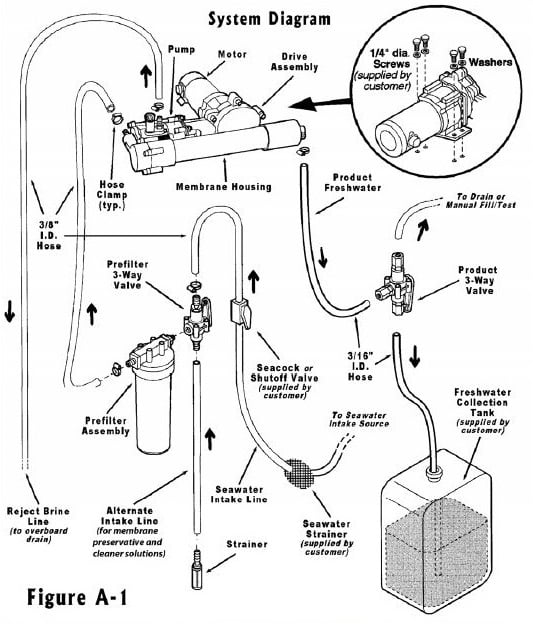
The PowerSurvivor has been a big success for us so far. It takes up hardly any storage room, it’s easy to operate and maintain, the water is as pure as it should be and the desalinator produces its promised 1.5 gallons per hour at an average of 4 amps. The manufacturer warns that it might require more power upon first operation (we found that it did not) and that its output might decrease in water below 57 degrees Fahrenheit. The chart in the owner’s manual shows capacity dropping to about 90 percent at 55 degrees and 60 to 80 percent in water below 40 degrees. In our first summer with the desalinator — during which the coldest water temperature we experienced was 49 degrees, in the Bering Sea — we did not see any noticeable drop in output or increase in current draw, and thus found the watermaker to be very reliable in normal circumstances. In summer 2015, we tested the machine at the edge of the polar pack ice, at 71.4 degrees N in the Arctic Ocean above Barrow, Alaska. With the sea temperature at 37 degrees, we did find a modest decrease in output: 5 liters per hour instead of the usual 6, which equates to 83 percent of normal and thus better than the engineers’ predictions. In other words, the PowerSurvivor has more than lived up to our expectations.
Having sailed long distances both with and without a watermaker, I’m now convinced that the half-day project of installing the PowerSurvivor and the minor task of servicing it when needed is well worth it. We no longer spend our first day after a passage hefting buckets of water. During our summer in the Arctic, we didn’t refill our tanks from shore for seven weeks and yet we never rationed ourselves — in fact, we took frequent freshwater showers. Now, if we want to anchor and avoid tying up to a dock, we can. If we doubt the quality of the shore water, we don’t have to fill up with it. And all this with only the power produced by our solar panels. Capt. Cook would have loved it.
Ellen Massey Leonard and her husband, Seth, have circumnavigated the globe and cruised extensively in Alaska and the Arctic. Ellen chronicles her adventures at gonefloatabout.com .
- More: How To , Living Aboard , watermakers
- More How To
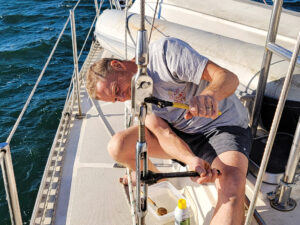
How to Rig Everything in Your Favor
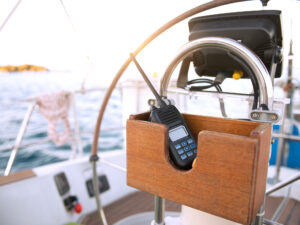
Is There a Doctor Aboard?

3 Clutch Sails For Peak Performance

It’s Time to Rethink Your Ditch Kit
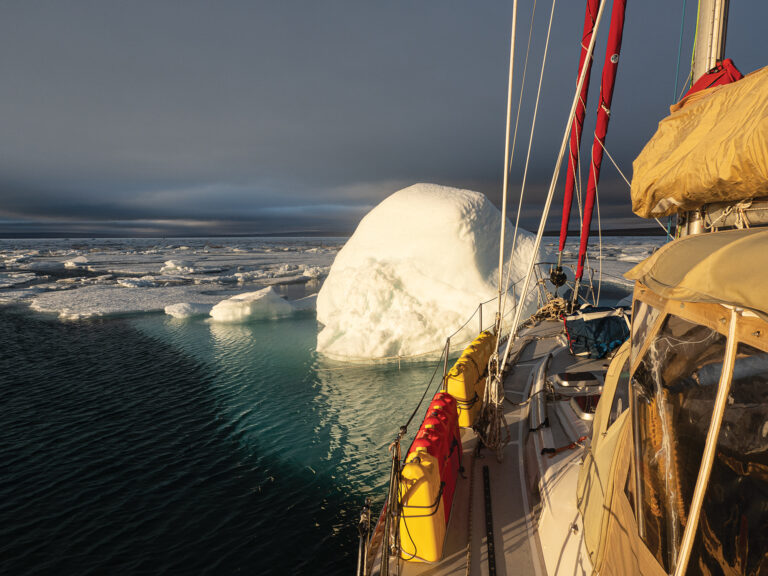
Cruising the Northwest Passage

Balance 442 “Lasai” Set to Debut
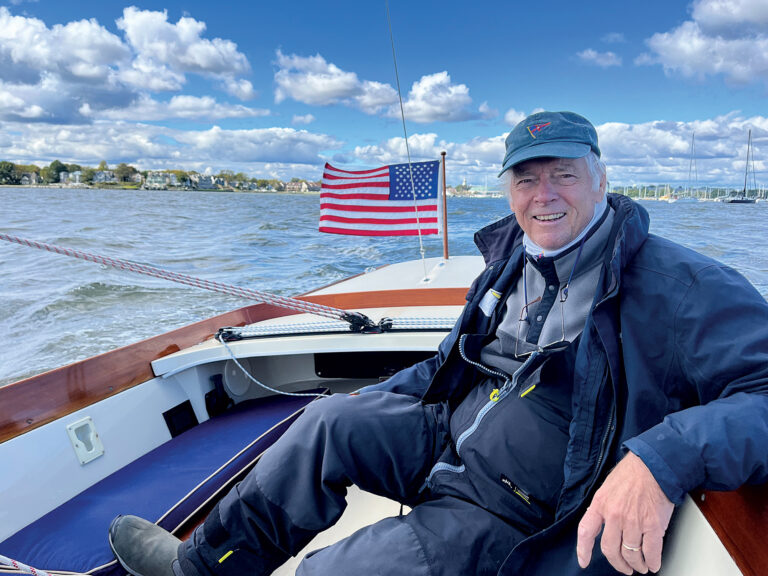
A Legendary Sail

10 Best Sailing Movies of All Time
- Digital Edition
- Customer Service
- Privacy Policy
- Email Newsletters
- Cruising World
- Sailing World
- Salt Water Sportsman
- Sport Fishing
- Wakeboarding
RetireFearless
Best Watermakers for Sailboats
Having the best watermaker for sailboats on board is one of the first and most important stages toward being sustainable and self-sufficient.

October 17, 2023
This article may contain affiliate links where we earn a commission from qualifying purchases.
With a watermaker, you'll always have access to fresh drinking water while sailing, even in remote locations. The majority of the models are well-built and have cutting-edge technology that make them efficient, dependable, and simple to install, use, and maintain.
We have shortlisted some of the best watermakers for sailboats. These include, The Ultra Whisper, EchotecWatermaker, Spectra KatadynPowerSurvivor, Village Marine - Little Wonder Series, and Ventura 150 Watermaker.
So, when it comes to selecting the best watermaker for your yacht, it may all boil down to what works best for you in terms of power consumption, efficiency, and the amount of water generated, among other factors.You may stay off the radar for as long as you like with the right watermaker, and you'll never run out of water, which is crucial for enjoying your sailing excursions.
After conducting our research and speaking with some experts in the industry, we have put together this guide to help you learn more about the best watermakers for sailboats.

Table of Contents
Best Watermakers for Sailboats – A Complete Guide
Trawlers, long-range boats, and yachts have seen a recent spike in interest in the marine business. It's reasonable that an off-grid,long-range, on-the-water life would be more enticing now than ever before. When preparing your boat for the long term, it's crucial to think about the most sustainable solutions, and having an appropriate supply of freshwater is sometimes disregarded. While most boats in this group have built-in freshwater tanks, the tank's capacity is often severely limited.
Let's have a look at some of the top watermakers now on the market.
The Whisper Ultra

Sea Recovery’s Ultra Whisper is by far one of the greatest watermakers currently available on the market, with limited electrical options that can work on either DC or AC. This watermaker is not only silent, but it also has an autonomous functioning that requires very little user intervention.
Since it can serve as an effective water supply, this watermaker is suitable for small powerboats and sailboats.When compared to other models, this model promises a 75 percent reduction in power use.
- Water output that is smooth and quiet
- Ideal for small vessels, it can produce up to 2,280 liters per day
- It conserves energy
- It might not be ideal for huge vessels
Watermaker by Echotec

Look no further than the Echotec if you want a watermaker that can create 60 liters per hour with no care other than changing the filters. This type is built for high reliability and simple customer installation.
This watermaker is constructed of high-quality components that can endure the severe sea environment, making it one of the most robust watermakers available. This is essentially a line of modular watermakers that range in power from 12-volt to 24-volt DC. They provide an energy economy, a computerized energy recovery system, and unwavering dependability to guarantee that you never go out of drinkable water while at sea.
- Low energy consumption
- Cost-effective
- It has a very slow speed
- Not recommended for large vessels
PowerSurvivor Spectra Katadyn

The Spectra Katadyn PowerSurvivor is likely the cheapest watermaker on the market as a compact and energy-efficient watermaker. We're talking about a desalination system for your sailboat that only uses 4 amps. It can create 1.5 gallons of clean drinking water each hour, which is a good yield for a small watermaker.
It's also one of the most mobile watermakers on the market. You have the option of installing it temporarily or permanently in case you need to move it. This portability is especially important if you're searching for a model that can fit into even the tiniest of spaces.
Its simple but tough design ensures that it can work well even in the harshest sea environments. When it comes to power, this is the only type on the market that can switch to a hand-operated mechanism or manual energy if there is a power outage.
- Lightweight and portable
- Rugged construction for use in hostile marine settings
- Effective and dependable
- If there is a power outage, you can switch to manual power
- Ideal for off-grid sailing
- The semipermeable membrane is quickly damaged by gasoline or diesel
Little Wonder Series by Village Marine

The Village Marine Little Wonder Series has everything you need, whether you're searching for a watermaker for your little sailboat or a watermaker that can effectively serve those large boats. This type is designed for seasoned sailors seeking a variety of capacity options. This watermaker is only 69 pounds in weight, but it can produce approximately 180 gallons of fresh drinking water every day.
This type is one of the most efficient and cost-effective watermakers on the market, thanks to its high-pressure pump with low RPM. Not only that, but this watermaker has corrosion-resistant characteristics and is one of the most serviceable watermakers on the marketplace. It's dependable, quiet, and portable, which are all fantastic qualities in a watermaker.
- Simple to operate
- Corrosion-resistant
- Simple to maintain
- Quiet and adaptable
- There are no automatic adjustment controls
Watermaker Ventura 150

This watermaker is one of the most multifunctional on the market. It has the ability to run on both electrical and renewable energy. This model is lightweight and energy-efficient, and its small and modular design makes it a fantastic choice if you need a watermaker that's simple to operate and install in tight areas.
The Ventura 150 watermaker is extremely efficient, producing over 6 gallons of water per hour, making it ideal for tiny boats. The controller on this yacht watermaker allows you to control and monitor the unit from afar. It also includes an auto-store feature that will flash the system every five days.
Despite its potential to create around 150 gallons of water each day, this watermaker is silent and surprisingly compact. It also allows you to choose between an automated manual and a manual model.
- Extremely adaptable
- It is possible to employ both electrical and renewable energy sources
- It is silent and smooth
- It is both small and light
- Analog controls are available on the manual model
Marine Watermakers: The Fundamentals
Reverse osmosis is used in marine watermakers to take in seawater and produce clean, drinkable water suited for any of your live-aboard demands. The newly created freshwater is then poured into your vessel's existing water tank, while the remaining "brine" is dumped overboard. The manner in which the water is pushed varies among most maritime watermakers. Typically, the water is either electrically propelled (AC or DC) or powered by the motor of your boat. The filtration procedure will be slower and the incoming seawater will be saltier and colder, so sailors may need a more powerful system than those fishing down in the Caribbean.Watermakers are available in a variety of shapes and sizes, with modular models best suited for smaller vessels because the sections may be "stashed" in any available extra cargo space.
With the appropriate Watermaker, the ocean may provide an almost limitless supply of fresh, clean drinking water to keep you hydrated on your offshore sailing adventures.When preparing for long-distance journeys, many sailors invest a lot of time and money on various aspects of the sailboat, including as the generators, electronics, engine, and sails.
While there's nothing wrong with that, they frequently forget one critical aspect of human survival: having enough fresh drinking water.Whether you have fresh water to drink in tanks on your yacht or plan to cruise in regions where clean drinking water is readily available, the annoyance of having to return to the dock to fill the water tanks might be overwhelming, which is exactly why you should look for the best watermakers for sailboats.
Watermakers, like many other navigational technologies, have progressed greatly in recent decades to become more efficient and reliable. Thus, they are no longer a luxury, but a necessity on the sailboat. Even better, watermakers have become reasonably priced and are designed to keep you hydrated when exploring locations without access to clean, fresh drinking water.
In this post, we'll look at how watermaker systems function, the benefits they provide, and the best sailboat watermakers currently available. You should be able to select the best watermaker for your yacht after reading this article.
To be honest, many sailors do not require the use of a watermaker. If you plan to sail near the coast, there's a good chance you'll be able to get fresh, clean water right off the dock. However, if you've always wanted to go off the grid and sail to far-flung corners of the globe, this can be a constraint.
A watermaker makes great sense to most seafarers with that in mind. During your cruise, you won't have to be worried about transporting tons of water for heating and drinking. You won't have to think of freshwater as a limited resource that must be conserved till the next port.You can easily cross the ocean without worrying about running out of water with a good watermaker.
A watermaker ensures a constant supply of fresh, clean water, keeping everyone hydrated and healthy. You may clean the water whenever you want, and all you have to do is remove the filter once in a while to keep it running smoothly. In essence, a watermaker is one of the most crucial pieces of sailboat equipment, thus having one installed is critical if you're a serious sailor.
Modern Marine Watermakers
To create pure, drinkable water from seawater, modern marine watermakers rely on the reverse-osmosis concept.Seawater is driven through a semi - permeable barrier that only permits freshwater molecules to flow through it, but not salt, germs, or any other organic substance, throughout this process. The newly purified fresh water is then piped into the sailboat's water tanks, with the remainder (brine) being thrown overboard.
Even though the sort of pump used and how it is powered varies amongst maritime watermakers, this is one of the most crucial aspects in any watermaker. Water can be pumped electrically or straight from the boat's motor in most circumstances. If your yacht has an AC generator or alternator, using the AC output to run the watermaker directly makes a lot of sense.
If you use renewable energy sources such as solar or wind, you can opt for DC-powered devices. You can also use AC-powered watermakers, but you'll need to purchase an inverter.
Overall, DC-powered watermakers are more effective than AC-powered watermakers because they have a power-saving energy recovery technology (ERS). However, keep in mind that if you're sailing in colder and saltier places, your energy usage may be fairly significant. This is because the water filtration procedure in certain places may be a little slower. As a result, if you expect to sail in colder, saltier places, you should make investments in a higher-powered watermaker system than if you plan to sail in warmer, less salty areas.
In case of a motor-driven watermaker, the high-pressure pump should be mounted on the motor so that it can be belt-driven with an automated clutch. If you need a significant amount of drinkable fresh water, a motor-driven watermaker should be your primary choice. This is more efficient than watermakers that are powered by AC or DC. This arrangement has an automatic controller that continuously pumps the water, despite the little engine. Engine-driven watermakers are great for reducing your energy consumption in this regard. When compared to traditional AC or DC-powered watermaker systems, an engine-driven watermaker can save up to 80% on energy consumption.
How to Select the Best Watermaker for Sailboats
When looking for the best watermakers for your yacht, there are numerous aspects to consider. The following are the most crucial factors to consider.
Your Freshwater Requirements
One of the most crucial factors to consider when purchasing a watermaker is your freshwater requirements. How much would be sufficient to keep you going on your sailing adventure? While the amount may vary from one sailor to the next or from one boat to the next, you should think about how many gallons a specific watermaker can create every day. This will assist you in selecting the best watermaker for you; one that will ensure you never run out of water.
Do not misjudge your water requirements, particularly if you plan to sail with children or stay on the boat for an incredibly long time.
Is there enough room on your boat to lodge the sort of watermaker you want to buy? While most watermakers are designed to fit into the tiniest of spaces, you need to evaluate the authentic size of the watermaker to see if you have enough space on your vessel to install it.
Watermakers can be powered by electricity, renewable energy sources like wind and solar (if available), or a combination of the two. When searching for the ideal watermaker, think about how it will be powered and whether or not it will consume little energy, which is a terrific feature. Again, there are engine-driven watermakers, so it's crucial to know exactly what you want.
Maintenance
Watermakers have a bad record for being tough to keep up with. Since components and equipment have improved in recent years, you should choose a model that is simple to maintain. You should utilize the watermaker in attractive water bodies.You should resist using the watermaker in polluted harbors because you may have to replace the filters frequently or perhaps damage the watermaker.
Recent Articles

What Size Sailboat Can One Person Handle?

How To Tie A Sailboat To A Mooring Ball Ring

What Is The Ideal Wind Speed When Sailing?

How To Use a Sailboat Winch

Things You Need To Liveaboard a Sailboat

Types of Sailboat Keels
I'm Michael Moris. I've been sailing my whole life, and it has taken me to places I never imagined. From the Caribbean to Europe, from New Zealand to South America - there's nowhere that hasn't felt like home when you're on a boat!

Trending Articles

How Far Is Havana From Miami By Boat?

Yachting Vs Sailing

Who Is Sailing Doodles?
Subscribe To Our Newsletter
Thank you! You're signed up for our free newsletter!
Oops! Something went wrong while submitting the form
About Our Team
We are a publishing team of licensed Nursing Home Administrators, Nurses, Assisted Living Directors, Health Professionals, Gardeners, and individuals with vast experience with senior living and activities.

©2024 Retire Fearless. All rights reserved.
We can be reached via email at [email protected]
Retirefearless.com is a participant in the Amazon Services LLC Associates Program, an affiliate advertising program designed to provide a means for sites to earn advertising fees by advertising and linking to Amazon. This site also participates in other affiliate programs such as CJ, ClickBank and more, and is compensated for referring traffic and business to these companies.
Facebook Pinterest
- sunwatermarine
- Dec 8, 2021
5 Best Watermakers for Sailboats
Last Updated by Daniel Wade, October 1, 2021

With the right Watermaker, the ocean becomes an almost immeasurable supply of fresh and clean drinking water to keep you hydrated during your offshore sailing adventures.
Many sailors do spend a lot of their time and money on various parts of the sailboat including the sails, engine, electronics, and generators especially when preparing for long-distance voyages.
While there's absolutely nothing wrong with this, they often overlook one crucial part of general human survival: having an ample supply of fresh drinking water.
Whether you have freshwater drinking tanks on your sailboat or planning to cruise in areas where you can easily access clean drinking water, the hassle involved in having to come to the dock to fill the water tanks can be quite overwhelming.
This is exactly why you need to find the best watermakers for sailboats.
Like many other nautical technologies, watermakers have significantly advanced in the last few decades to become very efficient and more reliable. They're no longer a luxury on your sailboat but a necessity. Better still, watermakers have become relatively affordable and are meant to keep you hydrated as you explore areas that do not have clean and fresh drinking water.
In this article, we'll take a look at how watermaker systems work, highlight their benefits, and highlight the best sailboat watermakers on the market right now. At the end of this read, you should be able to choose the best watermaker for your sailboat.
Benefits of Having a Watermaker on Your Sailboat
The freedom and security that come with having full water tanks on your sailboat are of immense importance, especially if you're cruising in an area where fresh drinking water is hard to come by and quite expensive when you do. As such, having a watermaker aboard your sailboat is no longer a luxury like it used to be in the past. With a steady supply of fresh and clean water, your life on the sailboat will be a lot better. This is because you'll have enough clean water to drink, cook, wash, and shower, which is beneficial if you want to enjoy your sailing adventures.
Honestly speaking, many sailors do not actually need a watermaker. Well, if you're planning to sail just near the shores, then there's a chance that you can easily access fresh and clean water by the dock. But this can be limiting if you've been dreaming of going off the grid and sailing to some exotic and unknown places in the world.
With that in mind, a watermaker makes a lot of sense to most sailors. You won't have to worry about having to carry aboard gallons of freshwater for cooking and drinking during your voyage. You won't have to treat freshwater as a precious commodity that must last until you can refill at the next port. With a watermaker, you can simply go ocean crossing without worrying about running out of water.
A watermaker allows you to have a steady supply of fresh and clean water to keep everybody well-hydrated and healthy. You can clean the water anytime you feel like and all you have to do is replace the filter once in a while and you'll be good to go. In essence, a watermaker is probably one of the most important equipment to have aboard your sailboat, so installing it is of great importance if you're a serious sailor.
The Basics of Modern Marine Watermakers
Modern marine watermakers essentially follow the principle of reverse-osmosis to produce pure, drinking water from seawater. During this process and through very high pressure, seawater is forced through a semipermeable membrane that only allows freshwater molecules to pass through it but not salt, bacteria, or any other organic material. The newly made pure, drinking water is then piped to the sailboat's water tanks while the leftover (brine) is discharged overboard.
Even though marine watermakers may differ in the type of pump that's employed and how it is driven, this is one of the most important features in every watermaker. In most cases, water can be electrically pumped or powered directly off the boat's engine. If you have an AC generator or alternator on your boat, it would make much sense to use the AC output to drive the watermaker directly. You can also choose the DC-powered models if you rely on renewable energy from solar or wind. Alternatively, you can still go for AC-powered watermakers but you'll have to buy an inverter.
All in all, DC-powered watermakers are more efficient since they integrate a power-saving energy recovery system (ERS). You must, however, keep in mind that your energy consumption levels might be quite high if you're sailing in colder and saltier areas. This is because the water purification process might be a bit slower in such areas. As such, you should consider investing in a more high-powered watermaker system if you will be sailing in colder and saltier areas than if you're planning to sail more in warm and less salty areas.
As far as an engine-driven watermaker is concerned, you should mount the high-pressure pump on the engine so that it can be belt-driven using an automatic clutch. An engine-driven watermaker should be your first option if you want large quantities of fresh drinking water. This is more productive than AC or DC-powered watermakers. Even with a relatively small engine, this setup has an automatic regulator that constantly pumps the water. With that in mind, engine-driven watermakers are ideal if you want to reduce your energy consumption. To put it into perspective, an engine-driven watermaker can lower energy consumption by an enormous 80%, especially when compared with conventional AC or DC-powered watermaker systems.
How to Choose the Best Watermaker for Your Sailboat
There are many factors to consider when looking for the best watermakers for your sailboat. Here are the most important things to consider.
Your Freshwater Needs
One of the most important things to consider before spending your money on a watermaker is your freshwater needs. What quantity would be enough to keep you going on your sailing adventure? While the quantity might differ from one sailor to the other or from one boat to the other, you should consider the number of gallons that a particular watermaker can produce per day. This will help you in choosing the ideal watermaker; a model that will ensure that you never run out of water. Do not underestimate your water needs, especially if you're planning to sail with your children or if you're planning to stay on the boat for an extended period of time.
Do you have enough space on your vessel to accommodate the type of watermaker you're looking to buy? While most watermakers are designed to fit in the smallest of space, you should consider the actual size of the watermaker and find out whether you have enough space on your vessel to fix it.
Watermakers can run on electricity, renewable energy such as wind and solar (if you have them on your vessel), or both. When looking for the perfect watermaker, you should consider how to power it and whether or not the watermaker has low-energy consumption, which is definitely a great feature. Again, there are also engine-driven watermakers, so it's important to know exactly what you're going for.
Maintenance
Watermakers have a reputation for being difficult to maintain. Fortunately, the equipment and components have improved in the last few years so you should go for a model that's easy to maintain. You should use the watermaker in water bodies that look good, You should avoid using the watermaker in dirty harbors as you may have to change the filters every so often or even damage your watermaker altogether.
Best Watermakers for Sailboats
Let's take a look at the best watermakers available on the market right now.
The Ultra Whisper

Engineered by limited electrical options that can run on either DC or AC, THE Ultra Whisper by Sea Recovery is one of the best watermakers currently available on the market. In addition to being very quiet, this watermaker features an automatic operation that requires very minimal operator adjustment.
This watermaker is ideal for small powerboats and sailboats since it can serve as an efficient water supply. This model boasts about a 75% reduction in power consumption, especially when compared to other models.
Smooth and quiet water production
Can produce up to 2,280 liters per day
Ideal for small boats
It is energy efficient
It might not be perfect for large boats
Echotec Watermaker

If you want a watermaker model that can produce 60 liters per hour flawlessly and with no maintenance apart from changing the filters, look no further than the Echotec Watermaker. This model is designed for ultra-reliable performance and easy customer installation.
This watermaker is made from high-quality components that can withstand the continuous harsh marine environment, making it one of the most durable watermakers on the market. This is essentially a series of modular watermakers ranging from 12-volt to 24-volt DC-powered models. They bring forth energy efficiency, a computerized energy recovery system, and ultimate reliability to ensure that you never run out of fresh drinking water while out there on the sea.
Energy efficient
Cost-effective
Comes with a very low speed
Not ideal for large boats
Spectra Katadyn PowerSurvivor

As a compact and energy-efficient watermaker, the Spectra Katadyn PowerSurvivor is arguably the most affordable watermaker currently available on the market. We are talking about a model that only requires 4 amps to desalinate water for your sailboat. It can produce 1.5 gallons of fresh drinking water per hour, which is an excellent return for a watermaker of its size.
It is also one of the most portable watermakers around. You can choose to either install it permanently or temporarily in case you want to take it somewhere else. This portability is also essential if you're looking for a space-saving model that can fit in the smallest of compartments. Its simple but rugged design is essential in ensuring that it can perform at its best even in harsh marine conditions. In terms of its power capabilities, this is the only model on the market that will convert to a hand-operated system or manual power if there's a power shortage.
Portable and lightweight
Rugged design to withstand harsh marine environments
Efficient and reliable
Can revert to manual power if there's a power shortage
Perfect for off-grid sailing
Gasoline or diesel can easily damage the semi-permeable membrane
Village Marine - Little Wonder Series

Whether you're looking for a watermaker for your small sailboat or looking for a watermaker that can efficiently serve those huge yachts, the Village Marine Little Wonder Series provides everything. This model is meant for experienced sailors who are looking for various capacity options. This watermaker weighs just about 69 pounds but can produce nearly 180 gallons of fresh drinking water each day.
Designed with a low RPM high-pressure pump, this model remains one of the most efficient and economical watermakers on the market. That's not all; this watermaker is designed with corrosion-resistant features and is one of the most serviceable watermakers in the game. It is reliable, quiet, and portable; all factors that make a watermaker great.
Easy to operate
Corrosion-resistant
Easy to maintain
Quiet and versatile
It doesn't have automatic adjustment controls
Ventura 150 Watermaker

This is one of the most versatile watermakers on the market. It can use both electricity and renewable energy. This model is engineered to be lightweight and energy-efficient and its compact and modular design makes it a great option if you're looking for a watermaker that's easy to use and install in confined spaces.
The Ventura 150 watermaker is highly efficient as it can produce over 6 gallons of water an hour, which makes it quite perfect for small vessels. This sailboat watermaker features a controller that allows you to operate and monitor the device remotely. It also has the auto store button that will automatically flash the system after every five days.
This watermaker is quiet and surprisingly compact despite its ability to produce about 150 gallons of water per day. It also gives you the option of going for the automated manual or manual model.
Very versatile
Can use both electricity and renewable energy power
It is smooth and quiet
It is compact and lightweight
The manual model has analog controls
To this end, it's easy to see that having an ideal watermaker aboard your vessel is one of the first crucial steps towards being self-sufficient and sustainable. With a watermaker, you'll be able to access fresh drinking water at all times when sailing even in far-flung places. Most of these models are well-constructed and incorporate some of the best technologies that make them efficient, reliable, and easy to install, use, and maintain.
So when it comes to choosing the best watermaker for your sailboat, it may all come down to what is ideal for you in terms of energy consumption, efficiency, the quantity of water produced, among many other things. With an ideal watermaker, you can remain off the grid for as long as you want without ever worrying about running out of water and this is of great importance in enjoying your sailing adventures.
Recent Posts
James Richmond on bluedotliving.com
Flanigan's Eco-Logic Convo Featuring James Richmond
Horsepower VS. Torque

Marine and portable watermakers

Our Company
Innovative watermakers since 1998.
Established in 1998 Schenker is a leading manufacturer of high quality watermakers based on an energy recovery system . Our company owns 4 patents for unique small scale energy efficient solutions.
Schenker Benefits
Why choose us.

80% less power consumption
Energy consumption can be reduced up to 80% compared to conventional systems.

Maximum space saving
An ultra thin design is ideal for space restrictions and provides easy access for maintenance.

Battery power supply
Our watermakers are powered directly from batteries without the need of a generator, our products, marine watermakers.
Schenker watermakers are simple, quiet, compact, efficient and fully automatic. A Schenker watermaker will allow you – whether you own a yacht, a sail boat or any vessel – to extend your cruising duration and increase your independency from marinas, thus enjoying more time at sea. Schenker’s three-years warranty is backed up by our international network of sales and service representatives.
Wiki RANGE: GAL/H 7.9"> RANGE: 30 LIT/H
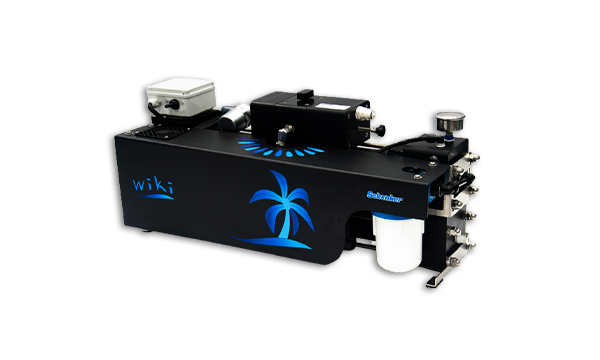
Portable marine watermaker
Zen RANGE: GAL/H 7.9-13.2-26.4-39.6-53-79"> RANGE: 30-50-100-200-300 LIT/H
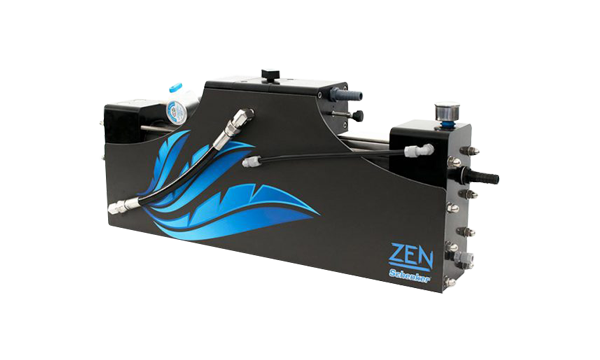
Quiet, small, efficient, inexpensive
Smart RANGE: GAL/H 7.9-15.8-21-26.4"> RANGE: 30-60-80-100 LIT/H
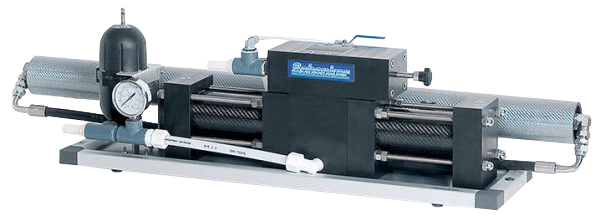
Smart, light and affordable
Modular RANGE: GAL/H 9-15.8-26.4-39.6-61-79-132"> RANGE: 35-60-100-150-230-300-500 LIT/H
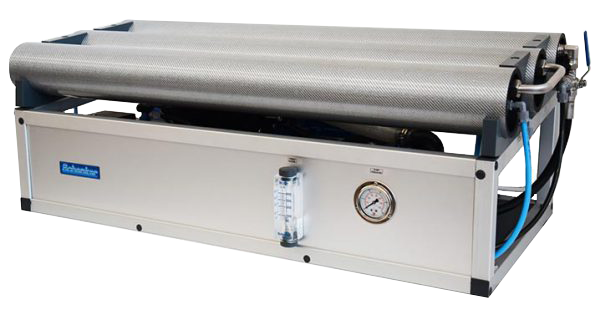
A very compact units for all needs
Our products
Emergency portable solutions.
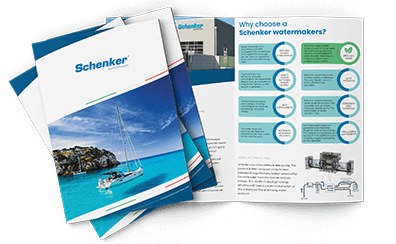
View our products range brochure
Download / View PDF
News & Articles
Share Share Tweet
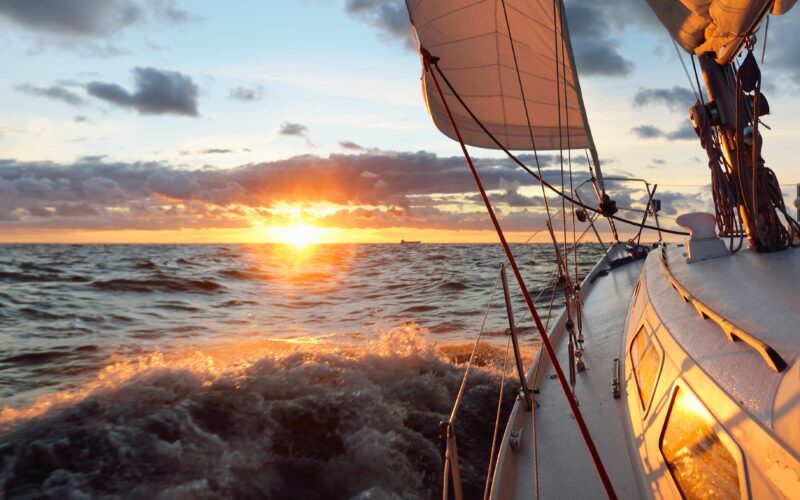
5 reasons why you should buy a nautical watermaker
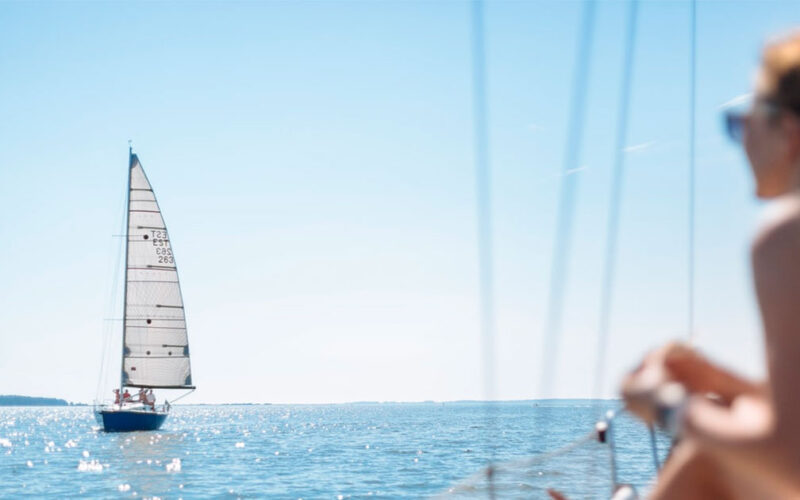
Schenker watermaker benefits: everything you should know
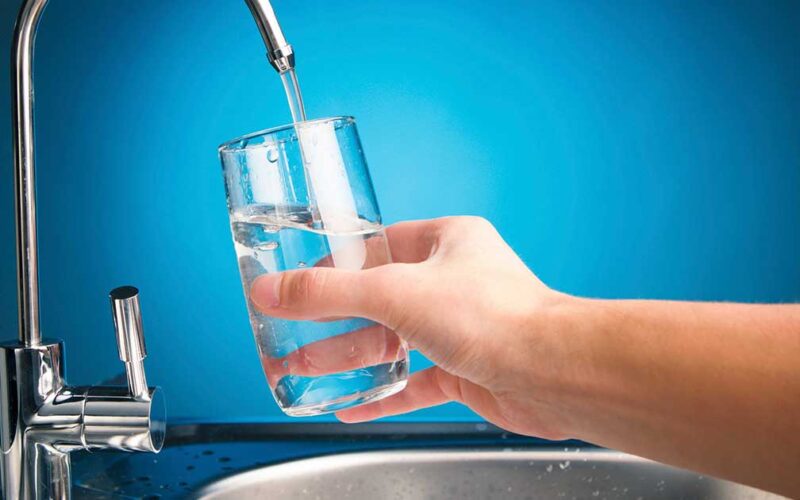
Water purification system: a new eco-product by Schenker Watermakers
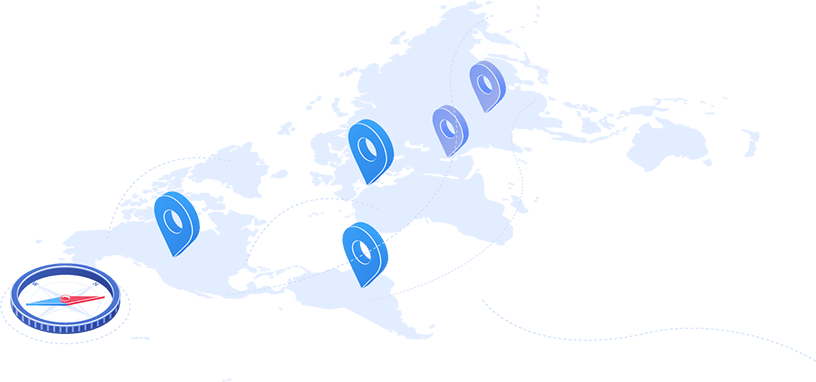
Worldwide dealers
Find schenker dealers near you, send us a message.
Name (required)
Email (required)
Select Your Country (required)
Aruba Afghanistan Angola Anguilla Isole Åland Albania Andorra Emirati Arabi Uniti Argentina Armenia Samoa Americane Antartide Terre Australi e Antartiche Francesi Antigua e Barbuda Australia Austria Azerbaijan Burundi Belgio Benin Bonaire, Sint Eustatius e Saba Burkina Faso Bangladesh Bulgaria Bahrain Bahamas Bosnia Erzegovina Saint-Barthélemy Bielorussia Belize Bermuda Bolivia Brasile Barbados Brunei Darussalam Bhutan Isola di Bouvet Botswana Repubblica Centroafricana Canada Isole Cocos Svizzera Cile Cina Costa d'Avorio Camerun Repubblica Democratica del Congo Congo Isole Cook Colombia Comore Capo Verde Costa Rica Cuba Curaçao Isola di Natale Isole Cayman Cipro Repubblica Ceca Germania Gibuti Dominica Danimarca Repubblica Dominicana Algeria Ecuador Egitto Eritrea Sahara Occidentale Spagna Estonia Etiopia Finlandia Fiji Isole Falkland Francia Isole Faroe Stati Federati della Micronesia Gabon Regno Unito Géorgie Guernsey Ghana Gibilterra Guinea Guadalupa Gambia Guinea-Bissau Guinea Equatoriale Grecia Grenada Groenlandia Guatemala Guyana Francese Guam Guyana Hong Kong Isola Heard e Isole McDonald Honduras Croazia Haiti Ungheria Indonesia Isola di Man India Territorio britannico dell'Oceano Indiano Irlanda Iran, Repubblica Islamica di Iraq Islanda Israele Italia Giamaica Jersey Giordania Giappone Kazakhistan Kenya Kirghizistan Cambogia Kiribati Saint Kitts e Nevis Corea, Repubblica di Kuwait Laos, Repubblica Popolare Democratica del Libano Liberia Libia Santa Lucia Liechtenstein Sri Lanka Lesotho Lituania Lussemburgo Lettonia Macao Saint Martin (Francia) Marocco Monaco Moldavia Madagascar Maldive Messico Isole Marshall Macedonia, ex Repubblica iugoslava di Mali Malta Myanmar Montenegro Mongolia Isole Marianne Settentrionali Mozambico Mauritania Montserrat Martinica Mauritius Malawi Malesia Mayotte Namibia Nuova Caledonia Niger Isola Norfolk Nigeria Nicaragua Niue Paesi Bassi Norvegia Nepal Nauru Nuova Zelanda Oman Pakistan Panama Pitcairn Perù Filippine Palau Papua Nuova Guinea Polonia Porto Rico Corea, Repubblica Popolare Democratica di Portogallo Paraguay Palestina, stato della Polinesia Francese Qatar Reunion Romania Federazione Russa Ruanda Arabia Saudita Sudan Senegal Singapore Georgia Meridionale e Isole Sandwhich Meridionali Sant'Elena, Ascensione e Tristan da Cunha Svalbard e Jan Mayen Isole Solomon Sierra Leone El Salvador San Marino Somalia Saint Pierre e Miquelon Serbia Sudan del Sud Sao Tome e Principe Suriname Slovacchia Slovenia Svezia Swaziland Sint Maarten (parte olandese) Seychelles Siria Isole Turks e Caicos Ciad Togo Tailandia Tagikistan Tokelau Turkmenistan Timor Est Tonga Trinidad e Tobago Tunisia Turchia Tuvalu Taiwan Tanzania Uganda Ucraina Isole Minori degli Stati Uniti d'America Uruguay US East Coast US West Coast Uzbekistan Città del Vaticano Saint Vincent e Grenadine Venezuela Isole Vergini Britanniche Isole Vergini Americane Vietnam Vanuatu Wallis e Futuna Samoa Yemen Sud Africa Zambia Zimbabwe
Message (required)
Security check (required)
Dimostra di essere umano selezionando camion .
Pursuant to and for the purposes of articles art. 7, 13 and 15 of EU Regulation 2016/679 I declare that I have read the privacy policy of this site and consent to the processing of personal data to receive the answer to my request.*
Main Office

Parker PRO Mini
The Parker PRO Mini Watermaker Series is designed for space restrictions while producing more fresh water, yet keeping the same small footprint. Producing 170 – 750 GPD, this desalinator is the perfect choice for the solo cruiser.
- Smallest line of Watermaker
- Easy access to main components
- Low AC power consumption
- Maximum system weight is 130 lbs
Description
Pro mini 170, pro mini 350, pro mini 550, pro mini 750, accessories.
The Parker PRO Mini Series are the smallest line of watermakers and available at AquaControl Marine. The low-hassle Parker PRO Mini is engineered to fit anywhere and is available for your professional or leisure purposes. With a small footprint of approximately 2 – 3 cubic feet, sail and small power boaters have the option and convenience of a Parker watermaker. The benefits of this watermaker are endless and we would be happy to tell you more about it.
What makes the Parker PRO mini so attractive?
The Parker PRO mini is smaller than a 20 gallon (75 litre) water tank, yet able to produce between 170 – 750 GPD (644 – 2,839 LPD) in capacity. That makes this desalinator a perfect seaworthy companion for the solo cruiser. Weighing at most, 130 lbs (59 kg), the Parker PRO Mini is also more convenient than hauling around a full water tank that adds about 8 pounds per gallon to your boat. To illustrate, if a 34 gallon (128 litre) tank was filled to capacity, that would create about 272 lbs (123 kg) additional weight to haul, which will put more stress on the engine, slow down the speed, and increase fuel costs. With the PRO Mini, compact boaters will carry minimal weight, save space, and cruise without limits to any destination they wish. Featuring a simple interface, with push-button operation, the PRO Mini can be monitored via the control panel or remote (optional).
This great Parker PRO Mini had unlimited features, such as Semi-Automatic Functions, 6 illuminated LED status indication lamps for system operation, an automatic freshwater flush, and sequential starting of electric motors with manual override. The Parker PRO Mini is therefore ideal for small power and sailboats. Underneath you will find a nice overview of all the most important features of the Parker PRO Mini.
Technology:
- Low AC Power Consumption
- DC power available for PRO Mini 170
- Automatic freshwater flush
- Chemical resistant Membranes
Meters/monitors:
- Hour Meter for keeping accurate ship’s logs & schedule preventative maintenance.
- New solid state electronic flow meters for visual monitoring of the product water and feed water flow used to calculate production rates of the system
- Exclusive Solid Salinity Meter shows actual product water quality, an essential tool for product water monitoring
- Product water quality is displayed in bar graph format with 10 additional LEDs
Service/Maintenance:
- Fault LED indication is provided for easy diagnosis of required maintenance
- The PRO Mini is shipped from the factory ready to install and function
- There are no optional items required, and a complete installation kit is also included along with a comprehensive and detailed Owner’s Operation & Maintenance Manual
- Worldwide Service and Sales Network for immediate attention regardless of location
- Technical service dedicated to excellent system performance
- With the most stable controller in the market, the PRO Mini keeps up its reputation as the smallest, most reliable watermaker used by boaters around the world
- With better maintenance access
- Exclusive high-efficiency booster pump for extended pre-filter life
- Quiet high-pressure pump runs smooth and is free of pulsations
- Noise Reduction Features
- The quiet stainless steel high-pressure pump is specifically designed for seawater reverse osmosis applications. The unique design of this high-pressure pump reduces noise level to a negligent hum
- Low noise manifold design
- Vibration isolation mounts included
- Dedicated heavy duty Magnetic Latching Relays for each motor integrated in the system
- 316 Stainless Steel Pressure Transducers for accurate measurement of system functions
- New High rejection / high yield membrane element that produces higher quality product water in a smaller space
- Fiberglass Reinforced High-Pressure Membrane Vessel is stronger and eliminates corrosion
- A failsafe Product Water Diversion Valve
- Unique Low Voltage Control Circuitry, shielded terminals and covered high voltage components for end-user safety
- Safety alarm features
Get this great watermaker with all the best features
Are you interested in the Parker PRO Mini from AquaControl Marine? Please do not hesitate to contact us for more information or advice. You can reach us by calling +31 164 257235 , sending an email to [email protected] or by filling out the contact form . We are also happy to help if your Parker PRO Mini requires maintenance . Just get in touch with us!
Brochure – PRO Mini
Dimensions – PRO Mini
Exploded Partview – PRO Mini
Manual – PRO Mini
Outfitting your water maker system with necessary options and accessories will add more life to your watermaker and lower your maintenance costs.

Subscribe to newsletter
To subscribe to our newsletter fill in the form below. You can read how we handle your data in our Privacy Policy
" * " indicates required fields

Watch CBS News
How to travel around the Francis Scott Key Bridge collapse in Baltimore: A look at the traffic impact and alternate routes
By Rohan Mattu
Updated on: March 29, 2024 / 5:01 AM EDT / CBS Baltimore
BALTIMORE -- The collapse of the Francis Scott Key Bridge in Baltimore early Tuesday led to a major traffic impact for the region and cut off a major artery into and out of the port city.
A bridge column was hit by a large container ship around 1:30 a.m., sending bridge workers and vehicles into the Patapsco River. A water search for six missing workers turned to a recovery effort Tuesday night.
Drivers are told to prepare for extra commuting time until further notice.

Alternate routes after Francis Scott Key Bridge collapse
Maryland transit authorities quickly put detours in place for those traveling through Dundalk or the Curtis Bay/Hawkins Point side of the bridge. The estimated 31,000 who travel the bridge every day will need to find a new route for the foreseeable future.
The outer loop I-695 closure shifted to exit 1/Quarantine Road (past the Curtis Creek Drawbridge) to allow for enhanced local traffic access.
The inner loop of I-695 remains closed at MD 157 (Peninsula Expressway). Additionally, the ramp from MD 157 to the inner loop of I-695 will be closed.
Alternate routes are I-95 (Fort McHenry Tunnel) or I-895 (Baltimore Harbor Tunnel) for north/south routes.
Commercial vehicles carrying materials that are prohibited in the tunnel crossings, including recreation vehicles carrying propane, should plan on using I-695 (Baltimore Beltway) between Essex and Glen Burnie. This will add significant driving time.

Where is the Francis Scott Key Bridge?
The Key Bridge crosses the Patapsco River, a key waterway that along with the Port of Baltimore serves as a hub for East Coast shipping.
The bridge is the outermost of three toll crossings of Baltimore's Harbor and the final link in Interstate 695, known in the region as the Baltimore Beltway, which links Baltimore and Washington, D.C.
The bridge was built after the Baltimore Harbor Tunnel reached capacity and experienced heavy congestion almost daily, according to the MDTA.
Tractor-trailer inspections
Tractor-trailers that now have clearance to use the tunnels will need to be checked for hazardous materials, which are not permitted in tunnels, and that could further hold up traffic.
The MDTA says vehicles carrying bottled propane gas over 10 pounds per container (maximum of 10 containers), bulk gasoline, explosives, significant amounts of radioactive materials, and other hazardous materials are prohibited from using the Fort McHenry Tunnel (I-95) or the Baltimore Harbor Tunnel (I-895).
Any vehicles transporting hazardous materials should use the western section of I-695 around the tunnels, officials said.
- Francis Scott Key Bridge
- Bridge Collapse
- Patapsco River
Rohan Mattu is a digital producer at CBS News Baltimore. Rohan graduated from Towson University in 2020 with a degree in journalism and previously wrote for WDVM-TV in Hagerstown. He maintains WJZ's website and social media, which includes breaking news in everything from politics to sports.
Featured Local Savings
More from cbs news.

Salvage efforts begin at Francis Scott Key Bridge

Baltimore community gathers to pray for Francis Scott Key Bridge collapse victims

Dundalk community stepping up for family of worker killed in Baltimore bridge collapse

Orioles honor three men who saved countless lives during the Key Bridge collapse

IMAGES
VIDEO
COMMENTS
Spectra Katadyn PowerSurvivor. As a compact and energy-efficient watermaker, the Spectra Katadyn PowerSurvivor is arguably the most affordable watermaker currently available on the market. We are talking about a model that only requires 4 amps to desalinate water for your sailboat.
The best sailboat watermakers for liveaboards. The Rainman naked 12V watermaker is a great option for anyone looking for a compact, efficient way to produce fresh water. The unit is simple to set up and use, and it produces up to 30 litres of fresh water per hour for a smaller unit, or up to 140 litres per hour for a larger one.
Since all of the watermakers that are currently available for cruising sailboats use this process for desalination, the major differences between the systems are how you power the high-pressure pump and the user interface. Powering options include 120/220-volt AC, 12- or 24-volt DC and engine/belt driven. All have their pros and cons.
1. Katadyn Power Survivor 40E Watermaker Desalinator. Small yet powerful, the Katadyn Power Survivor 40E is a reliable workhorse designed for boats with a small crew population of 2 to 3. This modular unit provides 1.5 gallons of water per hour, and draws only 4 amps from a 12-volt system, making it one of the most energy efficient desalinators ...
Let's take a look at a roundup of some of the best boat watermakers on the market right now for your vessel. The Ultra Whisper. The Ultra Whisper by Sea Recovery is best for small boats and sailboats, this super low power machine is specifically engineered for boaters with limited electrical options and can run on either AC or DC power ...
SK Engineering is a small watermaker manufacturer based in Ft. Pierce, Florida. They do virtually no advertising, go to few boat shows, and have a very low-overhead operation geared to the Florida market. While most of their units are AC-powered, their DC 150 is a 12-volt model with a nominal output of 6 gallons per hour.
In terms of installation, the kinds of watermakers that work best with the typical small or mid-size cruising sailboat are those that are fully modular—i.e., in which the filters, strainers, pumps and semi-permeable membrane are all installed separately in whatever kind of an arrangement suits your boat best. ... Windelo 50, Top 10 Best Boats ...
The AMPAC USA SeaPro Saltwater Desalination RO Watermaker is a great option for small power boats or sailboats. It is designed for automatic operation and is super quiet. It can produce up to 100 gallons per day and has intuitive controls that make it easy to start and stop the desalination process with the push of a button.
Desal systems suitable for recreational cruising range from $3,500 to $11,000, with the price difference based mostly on the production. A few portable systems are priced as low as $1,200, but their output won't do the job for more than basic needs for a couple aboard. We'll look at some of those available in Part 2.
A watermaker on a yacht converts seawater into fresh water through a process known as reverse osmosis (RO). A high-pressure pump pushes seawater through a semi-permeable membrane that filters out salt, organics, and bacteria. The fresh water is pumped into your water tanks while the remaining brine bi-product is discharged over the side of the ...
It's also important to choose a reliable and reputable brand like ECHOTec Watermakers with a good track record of customer support and service. Some of our most popular options for sailboat watermakers include the following: 12/24v DC Economy Watermakers. 12 - 180v DC Watermakers. Belt-Driven DC Watermakers (Modular)
A Rainman watermaker turns salt water to fresh, drinking water! The watermaker needs two things to work: a raw water source, like the sea, and a power source, which on a sailboat is typically your batteries and solar panels. You can get watermakers that run directly off the 12VDC / 24VDC your batteries provide, or from your inverter at 120VAC ...
A Watermaker Upgrade. Ellen Massey Leonard. Updated: Jan 17, 2024. Original: May 16, 2022. Low-lying atolls like this one are beautiful and surprisingly dry, making a watermaker essential. As a classic-boat sailor, I've long held that simpler is the better. I still think this is true: a simpler boat is cheaper, she has less gadgets to break ...
Parker Hannifan H20 ECO. Most boats 40 feet and longer will use watermakers run with AC-powered pumps; however, DC-powered watermakers are used on smaller powerboats and sailboats. AC-powered systems deliver a more constant flow rate and higher pressure over a longer period, while DC systems are for boats with less demand and smaller tanks.
Katadyn-owned Spectra produces a wide range of watermakers, from the hand-operated Survivor 06 to a commercial AC model capable of producing 10,000 gallons per day. The most suitable units for cruising yachts are its DC/AC-powered Ventura, Catalina and Newport models, offering production rates of between 6.3 and 41gph.
Katadyn makes a variety of water-makers for recreational and commercial boats of all sizes. Models range from the Ventura 150—putting out up to 150 gpd (568 lpd)--up to the Farallon 2800, putting out 2,800 gpd (10,600 lpd). Many models can be controlled remotely, and several of the small and mid-size units have low-power settings that allow them to be run at reduced capacity from house ...
Running a watermaker while sailing is indeed a viable option, and many modern sailboats are equipped with systems designed for precisely this purpose. The feasibility of operating a watermaker during sailing largely depends on the specific technology employed and the boat's power capabilities.
The drive assembly and membrane housing are the heart of every watermaker system, and some of the largest components. The membrane housing must be positioned horizontally. In the installation above, the briny discharge hose comes out of the membrane housing and makes a loop to tie into the boat's sink drain. Ellen Massey Leonard.
The majority of the models are well-built and have cutting-edge technology that make them efficient, dependable, and simple to install, use, and maintain. We have shortlisted some of the best watermakers for sailboats. These include, The Ultra Whisper, EchotecWatermaker, Spectra KatadynPowerSurvivor, Village Marine - Little Wonder Series, and ...
Last Updated by Daniel Wade, October 1, 2021With the right Watermaker, the ocean becomes an almost immeasurable supply of fresh and clean drinking water to keep you hydrated during your offshore sailing adventures.Many sailors do spend a lot of their time and money on various parts of the sailboat including the sails, engine, electronics, and generators especially when preparing for long ...
Marine Watermakers. Schenker watermakers are simple, quiet, compact, efficient and fully automatic. A Schenker watermaker will allow you - whether you own a yacht, a sail boat or any vessel - to extend your cruising duration and increase your independency from marinas, thus enjoying more time at sea. Schenker's three-years warranty is ...
The Parker PRO Mini Watermaker Series is designed for space restrictions while producing more fresh water, yet keeping the same small footprint. Producing 170 - 750 GPD, this desalinator is the perfect choice for the solo cruiser. Smallest line of Watermaker. Easy access to main components.
Shop our wide selection of water makers for boats including user-friendly, high quality marine watermaker systems from top brands. Reliably reverse osmosis membranes. Need Help? ... Small Manual Watermaker. SKU: 09327 | Item ID: PUR 8013419. In Stock. FCI WaterMakers General Water Filter Sediment Cartridge 5 Microns. SKU: 442422 | Item ID: FCI ...
BALTIMORE -- The collapse of the Francis Scott Key Bridge in Baltimore early Tuesday led to a major traffic impact for the region and cut off a major artery into and out of the port city. Drivers ...